#Buddha figure carved on a rock face
Text
06/09/2023(厄払いの旅1)
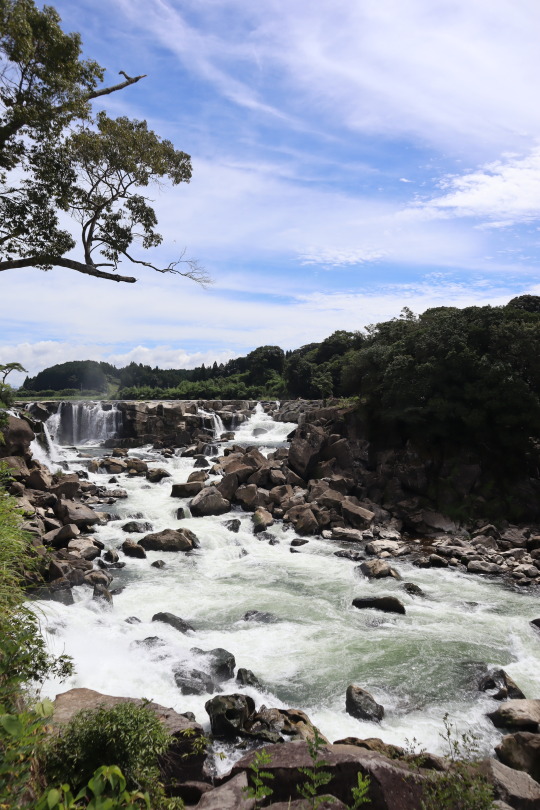
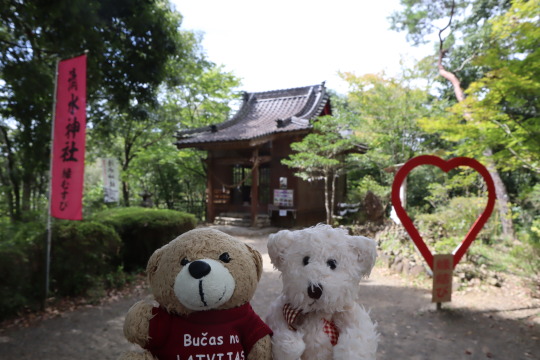


久しぶりの曽木の滝

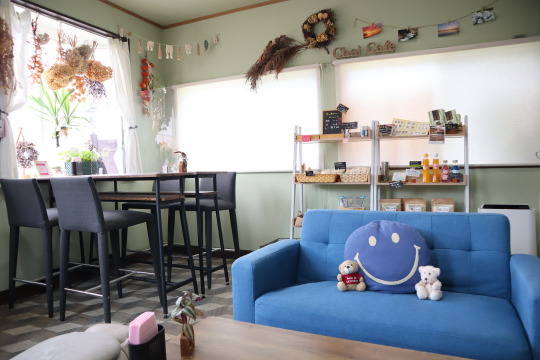

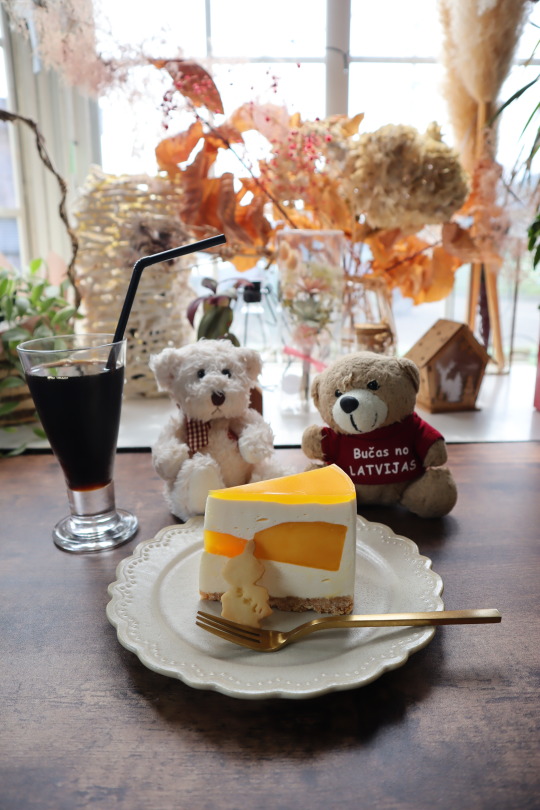
…からの、一休/ちょいCafeへ。


道中、さつま町にある下丁場磨崖仏にも立ち寄りました。一部判読不能の箇所もありますが、ほとんどは梵字がよく読めます。
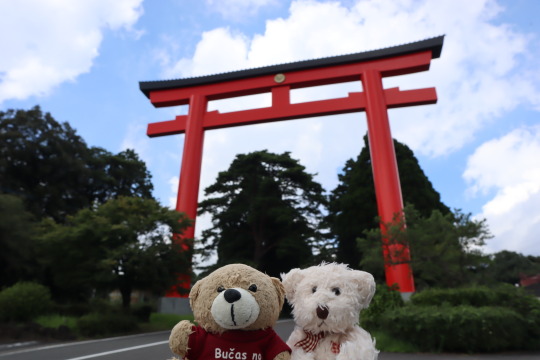



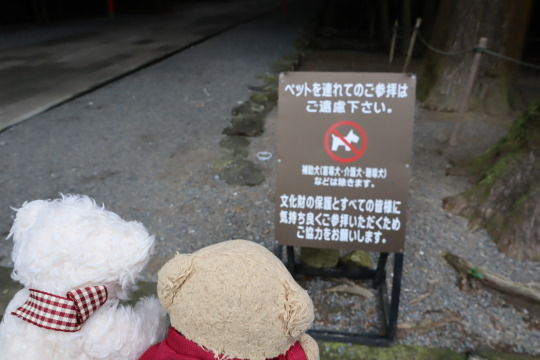
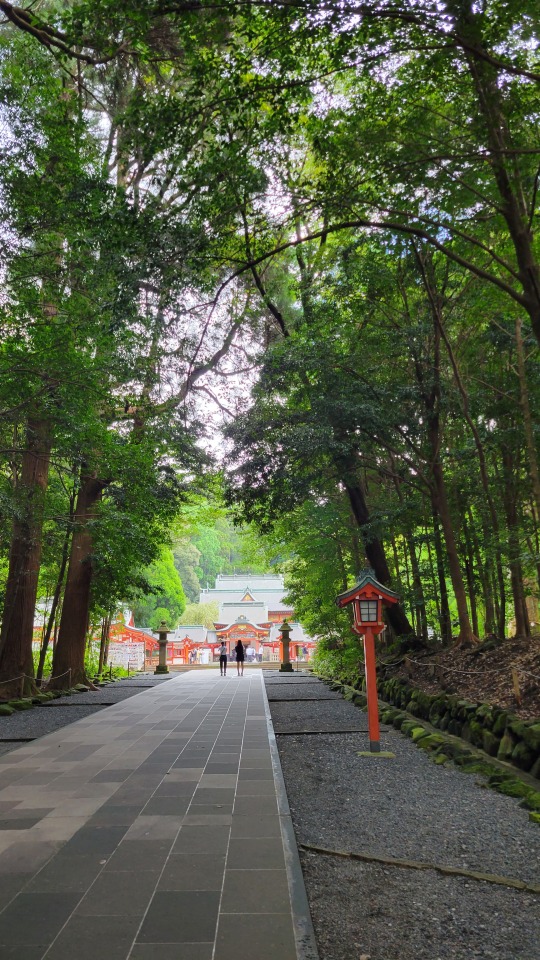
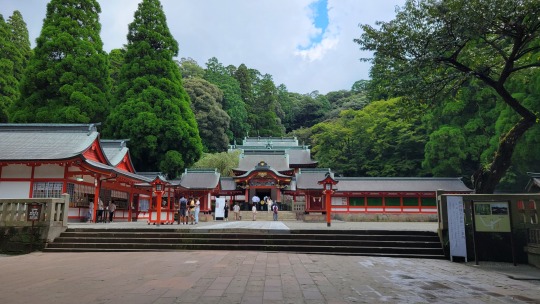
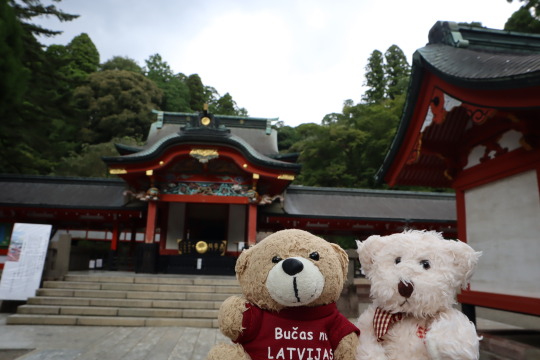
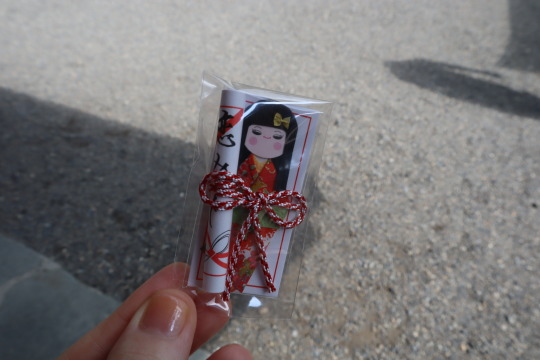

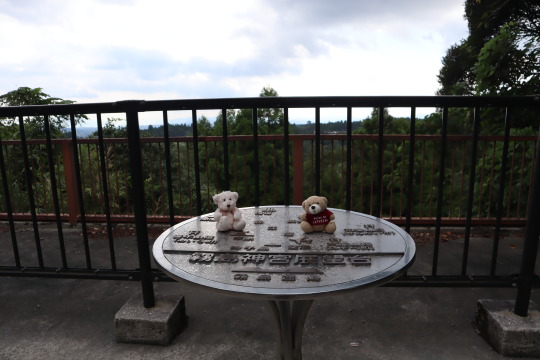
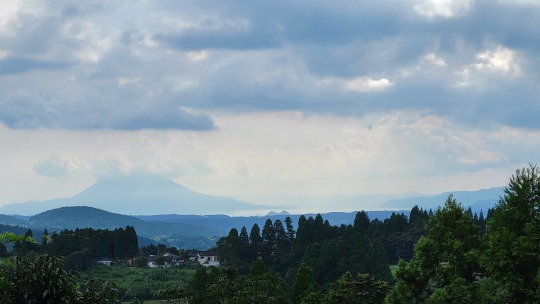
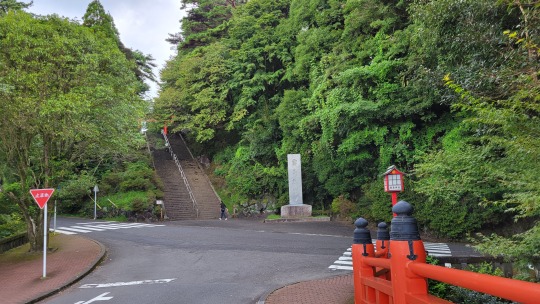
王道の霧島神宮が本日の目的地⛩️
桜島もかすかに見えました⛰️
今週は厄払いの旅と称して1泊2日の旅に出かけています笑
#備忘録#photography#japan#kyushu#kagoshima#美味しさは正義です#reminder#スイーツには夢がないとダメ#sweets#曽木の滝#ちょいCafe#霧島神宮#shrine#磨崖仏#buddha statue#Buddha figure carved on a rock face#梵字#isa#kirisima#kiyomizu shrine#清水神社#kirishima shrine#下丁場磨崖仏#厄払いの旅
62 notes
·
View notes
Text
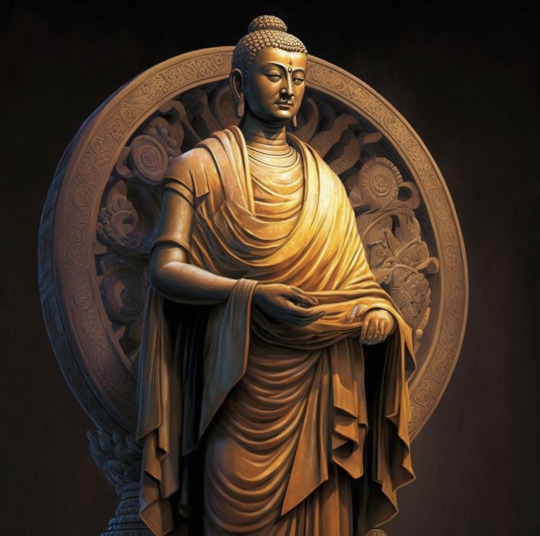
Global Spread of Buddhism - 02
Following the third Buddhist Council, King Ashoka sent Buddhist missionaries to all parts of India, built 84000 stupas and arranged to carve inscriptions on pillars and rocks. The Sthaviravadins continued to be the oldest and most orthodox tradition eventually becoming the Theravada Buddhism, while the Mahasanghikas through a process of many transformations eventually appeared as Mahayana Buddhism around the 1st century CE. Vajrayana Buddhism developed from the Mahayana Buddhism between the 3rd and the 7th century CE. Buddhist monastic universities were built including Nalanda University near Rajagaha in Eastern India and others in North India with royal patronage where Mahayana Buddhism was taught.
However, these universities were destroyed and thousands of Buddhist monks were killed by the invading forces between the 10th and 13th centuries. Buddhism began declining in India due to several reasons including the competition from Hinduism, loss of royal patronage as well as the invasions from Central Asia in the 6th century and by the Muslims in the 11th century. These factors were responsible for the virtual extinction of Buddhism in India by the 13th century. In 1891, a Sri Lankan Buddhist leader called Anagarika Dharmapala came to India and founded the Mahabodhi Society in order to revive Buddhism and built Buddhist temples in Buddhist religious places such as Bodh Gaya and Sarnath. Again, in the 20th century there was a revival of Buddhism in India particularly after 1956 which was the 2500th anniversary of Gautama Buddha's passing away. A prominent figure in the revival of Buddhism in the 1950's was Dr. Ambedkar who fought against the caste system and the social injustice faced by the Dalit or Untouchable community. He converted to Buddhism in October 1956 along with 380,000 fellow Dalits in a mass conversion ceremony at Nagpur.
#buddha#buddhist#buddhism#dharma#sangha#mahayana#zen#milarepa#tibetan buddhism#thich nhat hanh#dhammapada#karma#mindfulness#dakini#four noble truths#pure land#equanimity#avalokitesvara#manjushri#bodhisattva#tsongkhapa#padmasambhava#atisha#amitaba buddha#heart sutra#shantideva#vajrasattva#medicine buddha#meditation#green tara
16 notes
·
View notes
Text
Top Places to Visit in Mumbai - Bharat Taxi

Mumbai—dreams come true! Mumbai's uniqueness is indescribable, from crowded railway platforms to Dabbawalas, multi-millionaires to suburban slums, Bollywood to vada pav, bhel puri, and sev puri. Visit the ideal areas in Mumbai to experience its vibrant energy. We've chosen some of Mumbai's best attractions to help you fall in love with this lavish city again and again.
Mumbai Family Attractions
Is your family visiting Mumbai? Mumbai boasts many family-friendly attractions. Family-friendly Mumbai destinations include:
Sanjay Gandhi National Park
This is Asia's most-visited national park, covering 104 sq. km. I rank it 2nd among Mumbai's prominent places. This park has several family-friendly activities. In a safari cage, you may see the park's big cats up close and canoe on the manmade lake. Hike to the Gandhi Tekdi memorial on the forest road or stairs. Kids love Van Rani, the toy train. To capture Buddha relics, visit the 2000-year-old Kanheri Caves. You'll also enjoy the forest's Jain Temple and unspoiled nature trails.
India Gate
George Willet designed Mumbai's biggest attraction, Gateway of India, in 1924 to celebrate King George V and Queen Mary's visit. Visit this spot in the morning or evening to enjoy the sea breeze with your family without the crowds. The Gateway of India, near to the Taj Mahal Palace and facing the Arabian Sea, is breathtaking. Take a ferry excursion to see this monument from the sea and see adjacent sights.
Ali Dargah
How about visiting one of Mumbai's most popular religious sanctuaries, built in the Arabian Sea? Haji Ali Dargah is where Sayed Peer Haji Ali Shah Bukhari is buried. This Indo-Islamic white marble building is spectacular. This place's main appeal is walking the causeway from the Dargah to Lala Rajput Rai Marg. Enjoy a panoramic view of the deep blue oceans while feeling the spirituality of this spot with loved ones! Fab is my fourth-best Mumbai attraction.
Red Carpet Wax Museum
Ever wanted to picture with Barack Obama, Michael Jackson, or Harry Potter? Yes. Fulfill this desire at the Red Carpet Wax Museum in the city of dreams. It features lifelike wax figures of famous people from science, politics, sports, and cinema. So post selfies with your idol on social media to make your buddies jealous. My 3rd favourite Mumbai spot.
Siddhivinayak Temple
Siddhivinayak Temple, devoted to Ganesh, is a popular Mumbai temple. Bollywood and sports celebrities visit the temple to pray to Siddhivinayak Ganapati. One-of-a-kind Lord Ganesha idol carved in black stone with trunk bent right. This temple offers a spiritually enriching family visit.
Elephanta Caves
The enormous rock-cut caves at this Mumbai UNESCO World Heritage Site will amaze you. Two Buddhist caves and five Shiva caves are there. From the Gateway of India, take a one-hour ferry to get here. Mumbai's ferry voyage is one of the best ways to see the city's scenery. The toy train will tour the caves from the entrance for non-trekkers. The MTDC cafeteria and canteen can satisfy your hunger. This blog recounts a one-day Elephanta Caves excursion.
Shivaji Terminus
Another Mumbai UNESCO World Heritage Site is Chatrapati Shivaji Terminus. This Victorian-Gothic building was built in 1888 during British colonial rule. Take a family photo here. After Taj Mahal, CST is India's most photographed building!
Shivaji Maharaj Vastu Sangrahalaya
Chhatrapati Shivaji Maharaj Vastu Sangrahalaya, a famous Mumbai entertainment and learning centre, with a majestic Indo-Saracenic architectural style. The Prince of Wales Museum was originally named to honour George V's India visit. If you want to learn about our country's legacy, this exquisite museum, which won the 2010 UNESCO Asia–Pacific Heritage Award, offers over 50,000 artefacts.
Girgaon Chowpatty
Want a cheap, easy vacation? Your hopes are answered at this Queen's Necklace public beach. This beach is famous for its Ganesh Visarjan festivals, where many come to see Lord Ganesha immersed. Ravan's effigy is burned after this beach's 10-day Ram Leela spectacle. Girgaon Chowpatty is the place to see the Nariman Point skyline.
ISKCON Temple
The 4-acre Sri Sri Radha Rasabihari ji Temple is near Juhu Beach. The elaborately carved temple holds Ratha Yatra, Janmashtami, Radhasthami, Makarsankranti, and Gaura Purnima. The marble temple has a 7-story hotel, auditorium, and café to help worshippers attend spiritual programmes. The ISKCON Temple has a large spiritual book library.
Mahalakshmi Temple
This gorgeous temple, built in 1831 by Hindu trader Dhakji Dadaji, draws many worshippers daily, especially on Diwali and Navaratra. Shri Mahalakshmi is supposed to come alive and grant worshippers' desires on these two dates. Shri Mahakali and Shri Mahasaraswati are also here. Mahalakshmi Temple is part of Maharashtra tourism due to its vernacular domestic architecture and unusual surrounds, studded with sweet and flower businesses.
Powai
12m-deep Powai Lake is 6.6 km long. IIT Bombay, east of the lake, adds shine. Nature lovers come to this lake to view sunbirds, kingfishers, kites, bulbuls, herons, ducks, parakeets, storks, and doves, as well as pink-purple Balsam shrubs. Crocodiles have been seen.
Mumbai Family Attractions
Fun memories are a priceless gift for kids. Mumbai makes this easy. Kids may make virtual mementos at these Mumbai attractions.
Kidzania
Kidzania is a kid-only indoor amusement park that lets kids role-play in a city setting. Role-playing requires students to do a "job" here. As an incentive, they receive kidzo money after completing the work. They're ecstatic to earn their first paycheck. Parents can watch their kids on TV from the lounge. Kidzania is a great place to take your kids for a day of interactive edutainment.
Nehru Centre
This educational and cultural centre honours Pandit Jawaharlal Nehru. Its dome-shaped planetarium sparks kids' interest in science and astronomy. Stargaze with your kids in the sky theatre. Make your kids stand at the cubicle that estimates their weight on each of the nine solar system planets. The small galaxy with Sun at the centre, Moon's surface, Earth from Moon, art gallery, library, and other attractions will energise and inspire your youngsters.
Taraporewala Aquarium
This aquarium, India's oldest, has marine and freshwater fish, including Lakshadweep coral fish. Its oceanarium simulates wandering under the sea with unique fish above you. More. The Touch Pool lets youngsters safely touch aquatic critters and fish. The fish spa is fun for kids and adults. This aquarium is wonderful for families because it educates and entertains.
Bhosale Zoo
Kids love zoos! While in Mumbai, take your kids to Veermata Jijabai Bhosale Zoo to see elephants, lions, tigers, monkeys, crocodiles, and more. The aviary has albino crows and flamingos. The zoo's 48-acre penguin enclosure is a popular attraction.
Smaaash Junior
Looking for indoor activities for your kids on a hot summer or rainy day? They should attend Smaaash Junior. Your kids will love this play area. Kids love the Tubular Slide, Canon Shooting, Netted Tunnel, Padded Bridge, Spinning Palm Tree, and more. Their food court offers mouthwatering treats to satisfy their hunger.
EsselWorld
Want excitement in Mumbai? EsselWorld offers family pleasure. A broad assortment of vivid and exhilarating rides await at this popular amusement park, to give you the adrenaline rush you want while soaring up in the air or plunging into freezing water. EsselWorld has everything—roller coasters, kid-friendly rides, challenges, and a happy playground. Wedding photos and events are popular there.
Mumbai Couples Attractions
Mumbai, the city of dreams, is ideal for romance. Here is our hand-picked list of romantic settings for you and your sweetheart.
Juhu
Watching the red sun and orange sky on a breezy beach with your partner is romantic. Juhu Beach is one such stunning destination in Mumbai, commonly visited by couples who need a little romantic vacation from the routine of daily life. Juhu's coastal eateries are perfect for romantic dates.
Marine Drive
Walk hand in hand with your partner along the path at Marine Drive observing the sunset hues reflected on the enormous Arabian Sea. It is a wonderful place to unwind and enjoy some romantic moments on a gorgeous evening. This is also one of the famous sites to visit in Mumbai at night. Eat some excellent street cuisine here.
Chota Kashmir
Chota Kashmir in Mumbai is the perfect setting for a romantic getaway. Its serene lake and greenery relax you. Relax in the garden or boat on the lake and fall in love in this paradise. Regardless, you'll find love again!
Worli Seaface
Couples love walking along Worli Water Face's lengthy promenade at night with a beautiful view of the sea. Sitting along the seashore with your partner and feeling the water washing across your face after hitting the rocks below makes the evening more romantic. Couples in Mumbai must visit this place for the Arabian Sea scenery and nice wind.
Hanging Gardens
Every relationship needs a break from routine. Take your partner to this beautiful Hanging Garden and relax among the flower gardens, spectacular water fountains, and lush green animal-shaped hedges. Take a humorous photo with your lover at the "Old Women Shoes" big boot structure. What's more romantic?
Prithvi Theatre
Prithvi Theatre is a must-see for art lovers and thinkers. It's a top Mumbai attraction. The Prithviraj Kapoor Memorial Theatre delivers relevant live performances and online workshops in multiple languages. It holds several festivals and features a bookshop and café. Since 1978, this theatre has promoted fresh ideas, respect, and personal growth.
Global Vipassana Pagoda
Visit this lovely pagoda to find serenity in Mumbai. Designed to seat 8000 Vipassana meditators, the pagoda’s architectural style is Burmese. The largest dome holds Buddha's bone relics. New and old students who want to follow Buddha, practise gratitude, and let go of mortality can take different courses.
Bandra-Worli Sealink
The Bandra-Worli Sea Link, a cable-stayed bridge with pre-stressed concrete and steel viaducts, is a stunning modern structure. Its 5.6 kilometre length supports 8 lanes of traffic. This bridge across Mahim Bay connects Bandra and Worli and makes photography easy.
Places to Visit in Mumbai with Friends
Friendships bring endless joy. Mumbai provides you and your buddies several possibilities for heavy-duty, limitless fun and enjoyment. Here’s a list of the top locations to visit in Mumbai with pals.
Colaba Causeway
Do your friends think shopping is the best therapy? They could shop forever on the Collaba Causeway. With stores after shops heaped up with treasures, you are sure to have a great time browsing everything from inexpensive garments to sophisticated designer wears, home décor products to jewellery, and everything in between. For food aficionados, the place has a lot of restaurants, cafés, and patisseries.
Film city Mumbai
Sprawling over about 100,000 sq. ft. land, the Dadasaheb Phalke Chitranagari popularly known as Mumbai Film City is a world of wonders where you can view theatres, parks, lakes, recording rooms, and grounds that are leased out for Bollywood film shootings. See popular comedy and movie sets on a bus tour of film city with pals. Bollywood aficionados should visit this film city.
Snow World
Snow world, another fantastic spot to have fun with friends, offers -10° C temperatures in Mumbai. Feel the natural snowfall, slide down the ice in a rubber tube, play snowball battles with your mates, rush down the ice hill screaming with delight, go ice skating and learn some snowboarding while you are in this truly ‘coool’ environment. Entertaining?
National Gallery Of Modern Art
This butterfly-shaped gallery with a dome in the centre attracts art lovers from all parts of India. It is the brainchild of Jawahar Lal Nehru, Humayun Kabir and Maulana Azad, and displays you how visual and plastic art forms have evolved over time. Art collections of renowned civilizations, artists and sculptors have found their appropriate place in this contemporary gallery. Picasso and Egyptian artefacts are on display here.
At a reasonable price, you can take a taxi from Bharat Taxi in Mumbai. If you have a question about booking a taxi in Mumbai, you can call +91-9696000999.
Read more - Bharat Taxi
1 note
·
View note
Text
Jesus Christ Superstar is Very Good
[I'm familiar with the 1973 film version, so that's what I'm talking about here. This may or may not apply to other renditions.]
I.
Jesus Christ Superstar is an...interesting rock opera interpretation of the gospel narrative.
If I had to describe it with one word, it would be "juxtaposition". Ancient Roman guards wielding AK-47s coexist with afro-hippies living in adobe huts. King Herod sings a whimsical falsetto tune just minutes before the thirty-nine lashings of Christ are counted off in an agonized voice by a guilt-ridden Pontius Pilate. 'Tonal whiplash' is perhaps putting it a bit lightly.
But somehow, it works. The anachronisms give it a sort of magical realism which suits its timeless theme. That theme is "idealism versus pragmatism", or perhaps "kindness versus effectiveness."
The opera opens with a song by Judas, of all people. Judas is depicted here not as a greedy turncoat, but as someone who cares deeply about Jesus, Jesus' ideals, and the welfare of others.
Listen, Jesus, I don't like what I see
All I ask is that you listen to me
And remember
I've been your right hand man all along
…
And believe me
My admiration for you hasn't died
But every word you say today
Gets twisted 'round some other way
And they'll hurt you if they think you've lied
…
I am frightened by the crowd
For we are getting much too loud
And they'll crush us if we go too far
…
Listen, Jesus, to the warning I give
Please remember that I want us to live
He points out that money spent on expensive perfumes for Jesus could have been used to feed the poor (a topic close to my own heart). We have every reason to believe what he says - that he only wants what is best for Jesus and the occupied Jews.
But his desire for the movement to succeed pragmatically, for Jesus and the apostles (and himself) to stay 'safe' leads him to be cold, uncaring, and of course, a murderer.
While he obviously cares for Jesus, it's undeniable that there's resentment and even anger in his dialogue (performed amazingly well by Carl Anderson here. Seriously, listen to it, it's incredible).
Nazareth, your famous son
Should have stayed a great unknown
Like his father carving wood
He'd have made good
Tables, chairs, and oaken chests
Would have suited Jesus best
He'd have caused nobody harm, no one alarm
He is overly concerned with how Jesus appears to others, urging Jesus to associate less with prostitutes for the sake of his public image. He prioritizes looking good over actually being good.
At best, he could be said to "indulge" Jesus' claims about being the son of God, and at worst he's outright skeptical of them.
I remember when this whole thing began
No talk of God then, we called you a man
Judas is characterized so heavily because the film revolves around the ideological conflict between him and Jesus. While Judas is pragmatic to the point of being cold and cruel, Jesus is idealistic and trusting to a fault. He refuses to explain himself to others or take any measures to ensure others understand what he means.
So why would the viewer like or sympathize with Jesus? Because he is shown, not as a divine chessmaster who knows everything, but as an honest and conflicted servant to a higher being he doesn't understand. When a crowd asks him to die for them, we see the fear in his eyes.
At the garden of Gethsemane, he has a gut-wrenching solo performance where he desperately begs God to let him live, or at least explain why he has to die (another amazing performance, this time by Ted Neeley).
Why, why should I die?
Why should I die?
Can you show me now that I would not be killed in vain?
Show me just a little of your omnipresent brain
Show me there's a reason for your wanting me to die
You're far too keen on 'where' and 'how' but not so hot on 'why'
And that is why Jesus' struggle here is emotional and moving, maybe even more than the canonical Christian Jesus!
The canonical Christian Jesus knew that he was the Son of God, knew that he had to die to redeem mankind's sins, and knew that he would live forever in Heaven after his Passion [1]. He experiences fear and pain, of course, but the guaranteed eternal paradise and his direct line to God the Father give him a kind of solace that no other mortal has ever had access to.
Superstar Jesus Christ? He's plagued by uncertainty, unsure of what his greater role is in God's plan. He is privy to no private information and has no guarantees whatsoever. For all he knows, he'll suffer and die for nothing, leaving his people to be dispersed and oppressed long after he's gone.
Just like with Judas, we have a character with a truly human blend of mixed emotions. Devotion and faith to God, fear of pain and suffering and failure, and a desperate desire to know why God won't tell him any more, and perhaps even some spite toward that same God he trusts so much:
Alright, I'll die!
Just watch me die!
See how, see how I die!
Oh, just watch me die
…
Why, then, am I scared to finish
What I started?
What you started!
I didn't start it!
His doubt has him end his prayer in Gethsemane with the tragicomic line:
Bleed me, beat me, kill me, take me now
Before I change my mind!
II.
I know that "idealism versus pragmatism" isn't the deepest or most complex theme in the world, but it's portrayed beautifully here. Two people who ultimately want the same thing, who should be the closest companions, are forced against each other by different beliefs about how to achieve their goals under an oppressive regime that hates both of them.
It's a story that avoids easy black and white morality, despite the fact that one of the characters is literally Jesus! The fairness with which it portrays the different "ideologies" makes it popular even among atheists (according to my surveys of Youtube comment sections).
This entire philosophical conflict comes to a head in Superstar, sung by the ghost of Judas and an angelic choir to Jesus right just he is crucified.
Why'd you choose such a backward time and such a strange land?
If you'd come today, you would have reached a whole nation
Israel in 4 BC had no mass communication
...
Jesus Christ, Jesus Christ
Who are you? What have you sacrificed?
Jesus Christ, Superstar
Do you think you're what they say you are?
…
Tell me what you think about your friends at the top
Now who'd you think, besides yourself, was the pick of the crop?
Buddha, was he where it's at? Is he where you are?
Could Mohamed move a mountain, or was that just PR?
The premise of this song is unique and emotional. Someone who believes in Jesus, and trusts him, wondering how this could possibly be part of a reasonable plan? Wondering why God would send his son to die, and then spend 2000 years doing not much at all? Wondering why there are other religions, with messiah figures who seem just as confident and spiritual and humble as Jesus, while being mutually contradictory with what Jesus preached?
This entire perspective, well...I empathize with it!
I used to be Christian, and these are the exact kind of questions I struggled with. Through Judas' character, this opera is willing to bring up the hard questions you have to answer when you're a modern, critical, utilitarian-minded Christian.
But it's not a shallow gotcha, trying to expose how dumb Christianity and Jesus are. Both Judas and Jesus are flawed, emotional, deeply sympathetic characters who have remarkably similar tragic fates. One takes his own life from guilt, and one lets his own life be taken from him through inaction and silence.
And remember: this is the same musical with the hippies and the AK-47 Roman guards and the falsetto King Herod song! The light-hearted aesthetics lure you into a genuinely moving story about the hard choices you face when trying to be a force for good in a complicated, deeply imperfect world.
And did I mention that it has some banger songs? Hosanna, Damned for All Time, and the Last Supper are all great songs in their own right.
What I'm trying to say is - Jesus Christ Superstar is very good.
[1] Okay, that's Catholicism, probably some other branches of Christianity believe slightly different things. But the basic point still stands.
2 notes
·
View notes
Text
INDIAN ROCK-CUT ARCHITECTURE
INCREDIBLE INDIA BEYOND AND BEFORE TAJ MAHAL
Taj Mahal – one of the seven wonders of the world, undoubtedly is one of the best things to see in India. I just mentioned one of the best…yes, you know why – with-out any doubt, there are so many places in India which are just over-shadowed because of the Taj. Don’t mind, being in Travel business I too love Taj, I’ve already been to Taj so many times and taken hundreds of Tourists to experience this wonderful, timeless magic now and yet never get enough of it. The reality is that India is a diverse, multi-cultured nation, despite this tourists usually prefer Taj and combines it with Jaipur and Delhi at max. Isn’t it unfair to other parts of India with immense beauty receives a cold-shoulder! There are so many places to visit in India beyond just the iconic Taj Mahal which make India as Bucket of Incredible India
Here I would try my best to Highlight Few Places and Monuments undoubtedly equally beautiful Taj, an example itself of Ancient Indian Architects glorifying Indian craftsmanship, technology and Hardship Where Rock-Cut Architect was introduced before 3rd century B.C.
INDIAN ROCK-CUT ARCHITECTURE:
Indian rock-cut architecture is more various and found in greater abundance in India than any other form of rock-cut architecture around the world. Rock-cut architecture is the practice of creating a structure by carving it out of solid natural rock. Rock that is not part of the structure is removed until the only rock left makes up the architectural elements of the excavated interior. Indian rock-cut architecture is mostly religious in nature.
As per historical evidence available there are more than 1,500 known rock-cut structures in India. Many of these structures contain artwork of global importance, and most are adorned with exquisite stone carvings. These ancient and medieval structures represent significant achievements of structural engineering and craftsmanship. The effort expended often astonishes visitors, but seen from one aspect, a rock-cut structure is a decorated rock quarry; most of the stone removed was typically put to economic use elsewhere.
Few of Rock-cut monuments in India:
Badami Cave Temples : (HANDCRAFTED WONDER)
The Badami cave temples are a complex of Hindu and Jain cave temples located in Badami, a town in the Bagalkot district in northern part of Karnataka, India. The caves are considered an example of Indian rock-cut architecture, especially Badami Chalukya architecture, which dates from the 6th century. Badami was previously known as Vataapi Badami, the capital of the early Chalukya dynasty, which ruled much of Karnataka from the 6th to the 8th century. Badami is situated on the west bank of a man-made lake ringed by an earthen wall with stone steps; it is surrounded on the north and south by forts built in later times.
The Badami cave temples represent some of the earliest known examples of Hindu temples in the Deccan region. They along with the temples in Aihole transformed the Malaprabha River valley into a cradle of temple architecture that influenced the components of later Hindu temples elsewhere in India.
Caves 1 to 4 are in the escarpment of the hill in soft Badami sandstone formation, to the south-east of the town. In Cave 1, among various sculptures of Hindu divinities and themes, a prominent carving is of the Tandava-dancing Shiva as Nataraja. Cave 2 is mostly similar to Cave 1 in terms of its layout and dimensions, featuring Hindu subjects of which the relief of Vishnu as Trivikrama is the largest. The largest cave is Cave 3, featuring Vishnu-related mythology, and it is also the most intricately carved cave in the complex. Cave 4 is dedicated to revered figures of Jainism. Around the lake, Badami has additional caves of which one may be a Buddhist cave. Another cave was discovered in 2015, about 500 metres (1,600 ft) from the four main caves, with 27 Hindu carvings.

Bagh Caves
The Bagh Caves are a group of nine rock-cut monuments, situated among the southern slopes of the Vindhyas in Bagh town of Dhar district in Madhya Pradesh state in central India. These monuments are located at a distance of 97 km from Dhar town.

Ellora Caves
Ellora (एलोरा) is a UNESCO World Heritage Site located in the Aurangabad district of Maharashtra, India. It is one of the largest rock-cut monastery-temple cave complexes in the world, featuring Hindu, Buddhist and Jain monuments, and artwork, dating from the 600–1000 CE period. Cave 16, in particular, features the largest single monolithic rock excavation in the world, the Kailasha temple, a chariot shaped monument dedicated to Lord Shiva. The Kailasha temple excavation also features sculptures depicting the gods, goddesses and mythologies found in Vaishnavism, Shaktism as well as relief panels summarizing the two major Hindu Epics.
Although the caves served as monasteries, temples and a rest stop for pilgrims, the site's location on an ancient South Asian trade route also made it an important commercial centre in the Deccan region. It is 29 kilometres (18 miles) north-west of Aurangabad, and about 300 kilometres (190 miles) east-northeast of Mumbai. Today, the Ellora Caves, along with the nearby Ajanta Caves, are a major tourist attraction in the Marathwada region of Maharashtra and a protected monument under the Archaeological Survey of India.
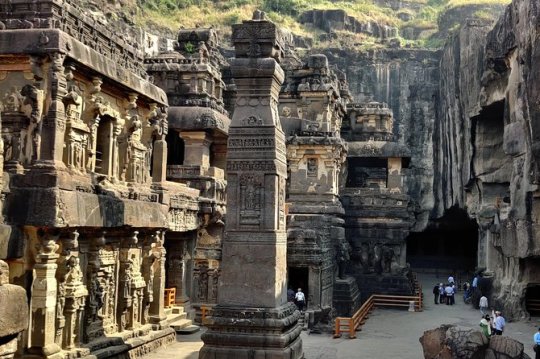
Gopachal
Siddhachal Caves or Gopachal Rockcut monuments are Jain cave monuments and statues carved into the rock face inside the Urvahi valley of the Gwalior Fort in northern Madhya Pradesh, India. There are the most visited among the five groups of Jain rock carvings on the Gwalior Fort hill. They were built over time starting in the 7th-century, but most are dated to the 15th-century CE. Many of the statues were defaced and destroyed under the orders of the Muslim Emperor Babur of the Mughal dynasty in the 16th century, while a few repaired and restored after the fall of the Mughal dynasty and through the late 19th century.
The statues depict all 24 Tirthankaras. They are shown in both seated Padmasana posture as well as standing Kayotsarga posture, in the typical naked form of Jain iconography. The reliefs behind some of them narrate scenes from the Jain legends. The site is about 2 kilometres (1.2 mi) from the South-East Group of Gopachal rock cut Jain monuments and about 1 kilometre (0.62 mi) northwest of the Teli ka Mandir within the Gwalior Fort.
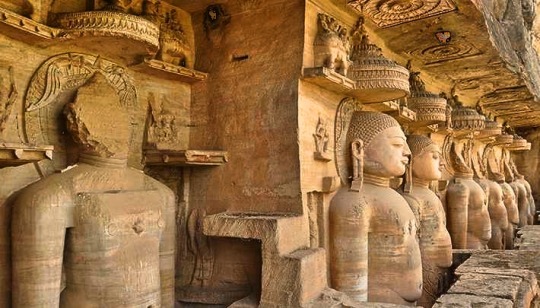
Kanheri Caves
The Kanheri Caves (Kānherī-guhāḥ) are a group of caves and rock-cut monuments cut into a massive basalt outcrop in the forests of the Sanjay Gandhi National Park, on the former island of Salsette in the western outskirts of Mumbai, India. They contain Buddhist sculptures and relief carvings, paintings and inscriptions, dating from the 1st century CE to the 10th century CE. Kanheri comes from the Sanskrit Krishnagiri, which means black mountain.
The site is on a hillside, and is accessible via rock-cut steps. The cave complex comprises one hundred and nine caves. The oldest are relatively plain and unadorned, in contrast to later caves on the site, and the highly embellished Elephanta Caves of Mumbai. Each cave has a stone plinth that functioned as a bed. A congregation hall with huge stone pillars contains a stupa (a Buddhist shrine). Rock-cut channels above the caves fed rainwater into cisterns, which provided the complex with water. Once the caves were converted to permanent monasteries, their walls were carved with intricate reliefs of Buddha and the Bodhisattvas. Kanheri had become an important Buddhist settlement on the Konkan coast by the 3rd century CE.
Most of the caves were Buddhist viharas, meant for living, studying, and meditating. The larger caves, which functioned as chaityas, or halls for congregational worship, are lined with intricately carved Buddhist sculptures, reliefs, pillars and rock-cut stupas. Avalokiteshwara is the most distinctive figure. The large number of viharas demonstrates there was a well organized establishment of Buddhist monks. This establishment was also connected with many trade centers, such as the ports of Sopara, Kalyan, Nasik, Paithan and Ujjain. Kanheri was a University center by the time the area was under the rule of the Maurayan and Kushan empires In the late 10th century, the Buddhist teacher Atisha (980–1054) came to the Krishnagiri Vihara to study Buddhist meditation under Rahulagupta.

Lenyadri Caves
Lenyadri, sometimes called Ganesa Lena, Ganesh Pahar Caves, or Suleman Caves, represents a series of about 30 rock-cut Buddhist caves, located about 5km north of Junnar in Pune district in the Indian state of Maharashtra. Other caves surrounding the city of Junnar are: Manmodi Caves, Shivneri Caves and Tulja Caves.
· Cave 7, originally a Buddhist vihara, has been adapted as a Hindu temple dedicated to the god Ganesha. It is one of the Ashtavinayak shrines, a set of the eight prominent Ganesha shrines in Western Maharashtra. Twenty-six of the caves are individually numbered. The caves face to the south and are numbered serially from east to west. Caves 6 and 14 are chaitya-grihas (chapels), while the rest are viharas (dwellings for monks). The latter are in the form of dwellings and cells. There are also several rock-cut water cisterns; two of them have inscriptions. The layout of the caves, in general, are similar in pattern and shape. They generally have one or two sides with two long benches for occupants' use.
The caves date from between the 1st and 3rd century AD; the Ganesha shrine situated in Cave 7 is dated to the 1st century AD, though the date of conversion to a Hindu shrine is unknown. All of the caves arise from Hinayana Buddhism

Mahabalipuram Caves
The Group of Monuments at Mahabalipuram is a collection of 7th- and 8th-century CE religious monuments in the coastal resort town of Mahabalipuram, Tamil Nadu, India and a UNESCO World Heritage Site. It is on the Coromandel Coast of the Bay of Bengal, about 60 kilometres (37 mi) south of Chennai.
The site has 40 ancient monuments and Hindu temples, including one of the largest open-air rock reliefs in the world: the Descent of the Ganges or Arjuna's Penance. The group contains several categories of monuments: ratha temples with monolithic processional chariots, built between 630 and 668; mandapa viharas (cave temples) with narratives from the Mahabharata and Shaivic, Shakti and Vaishna inscriptions in a number of Indian languages and scripts; rock reliefs (particularly bas-reliefs); stone-cut temples built between 695 and 722, and archaeological excavations dated to the 6th century and earlier.The monuments were built during the Pallava dynasty. Known as the Seven Pagodas in many colonial-era publications, they are also called the Mamallapuram temples or Mahabalipuram temples in contemporary literature. The site, restored after 1960, has been managed by the Archaeological Survey of India.

Pancha Rathas
Pancha Rathas (also known as Five Rathas or Pandava Rathas) is a monument complex at Mahabalipuram, on the Coromandel Coast of the Bay of Bengal, in the Kancheepuram district of the state of Tamil Nadu, India. Pancha Rathas is an example of monolithic Indian rock-cut architecture. The complex was carved during the reign of King Narasimhavarman I (630–668 AD): the idea of realising monolithic buildings, an innovation in Indian architecture, is attributed to this ruler. The complex is under the auspices of the Archaeological Survey of India (ASI) and is part of the UNESCO World Heritage site inscribed by UNESCO as Group of Monuments at Mahabalipuram.
Each of the five monuments in the Pancha Rathas complex resembles a chariot (ratha), and each is carved over a single, long stone or monolith, of granite which slopes in north-south direction with a slight incline. Though sometimes mistakenly referred to as temples, the structures were never consecrated because they were never completed following the death of Narasimhavarman I The structures are named after the Pancha Pandavas and their common wife Draupadi, of epic Mahabharata fame. In order of their size, they include the Dharmaraja Ratha, Bhima Ratha, Arjuna Ratha, Nakula Sahadeva Ratha, and Draupadi Ratha.

Kazhuku Malai
The Sculptures in the only single-stone temple car at Kazhuku Vettuvan Coil are discussed. Also described are the sculptures, the paintings and the storeyed temple of Pandyas.The five core units of the sculptures in cave temples, in single-stone temple cars, in built-up temples, in the eight storeyed temple towers, and paintings of the Pandya period. The cave-temple tradition of the Pallavas was followed and perfected by the Pandyas. The first Pandya cave-temple is in Malakadikurichi of Tirunelveli District. Cave-temples at places like Othakadai in Madurai District, Thirupparankundram, Pillayarpatti Cave-temple near Karaikudi, Kundrakudi, Trichy, and Chokkampatti have numerous sculptures in them.The Single-stone temple car sculptures at Kazhukumalai in Tirunelveli District earned the name “Southern Ellora” for the place. Paintings of the early Pandyas, sculptures of building type at Kazhukumalai, a few remnants of early Pandyas’ built-up temples, temple-towers and Mandapas constructed by later Pandyas and also their paintings reveal the interest of Pandyas in these arts.

Pandavleni Caves
The Nasik Caves, or sometimes Pandavleni Caves (or Pandu Lena,[1] Pandu Caves or Trirashmi Leni, Trirashmi being the name of the hills in which the caves are located, Leni being a Marathi word for caves), are a group of 24 caves carved between the 1st century BCE and the 3rd century CE, though additional sculptures were added up to about the 6th century, reflecting changes in Buddhist devotional practices mainly. Buddhist sculptures are a significant group of early examples of Indian rock-cut architecture initially representing the Hinayana tradition. Most of the caves are viharas except for Cave 18 which is a chaitya of the 1st century BCE. The style of some of the elaborate pillars or columns, for example in caves 3 and 10, is an important example of the development of the form. The location of the caves is a holy Buddhist site and is located about 8 km south of the center of Nashik (or Nasik), Maharashtra, India, The "Pandavleni" name sometimes given to the Nasik Caves has nothing to do with the characters Pandavas, characters in the Mahabharata epic. Other caves in the area are Karla Caves, Bhaja Caves, Patan Cave and Bedse Caves.

Pitalkhora
The Pitalkhora Caves, in the Satamala range of the Western Ghats of Maharashtra, India, are an ancient Buddhist site consisting of 14 rock-cut cave monuments which date back to the third century BCE, making them one of the earliest examples of rock-cut architecture in India. Located about 40 kilometers from Ellora, the site is reached by a steep climb down a flight of concrete stairs, past a waterfall next to the caves.The caves are cut in a variety of basalt rock, but some of the caves have crumbled and are damaged. Out of the 14, four are chaityas (one housing votive stupas, one apsidal and single-cell) and the rest are viharas. All the caves belong to the Hinayana period, but the reasonably well preserved paintings are of the Mahayana period. The caves are in two groups, one of 10 caves and the second of four. It is believed that Pitalkhora can be identified with Ptolemy’s "Petrigala" as well as the "Pitangalya" of Mahamayuri, a Buddhist chronicle. The inscriptions date from c. 250 BCE to the 3rd and 4th centuries CE.
The site shows statues of elephants, two soldiers of which one is intact, a damaged Gaja Lakshmi icon, and an ancient rainwater harvesting system. These caves have been significant in helping establish the chronology of cave building in the Ajanta-Ellora region.

Undavalli caves,
The Undavalli Caves, a monolithic example of Indian rock-cut architecture and one of the finest testimonials to ancient viswakarma sthapathis, are located in Undavalli of Guntur district in the Indian state of Andhra Pradesh. The caves are located 6 km south west from Vijayawada, 22 km north east of Guntur City of Andhra Pradesh. It is one of the centrally protected monuments of national importance.These caves are said to be found in 7th century. They are associated with the Vishnukundi kings of 420-620 CE. These caves are dedicated to Anantha Padmanabha and Lord Narashimha. Buddhist monks used these as rest houses.
These caves were carved out of solid sandstone on a hillside in the 4th to 5th centuries CE. There are several caves and the best known largest one has four stories with a huge recreated statue of Vishnu in a reclining posture, sculpted from a single block of granite inside the second floor. Many Buddhist artifacts and stupas in Andhra were converted into Hindu temples and deities and undavalli is an example. It was originally a Jain cave resembling the architecture of Udayagiri and Khandgiri..The main cave is one of the earliest examples of Gupta architecture, primarily primitive rock-cut monastery cells carved into the sandstone hills. Initially, the caves were shaped as a Jain abode and the first-floor abode still retains the Jain style; the vihara exhibits Jain monastics and includes tirthankara sculptures. This first level of the cave is a carved vihara and includes Buddhist artwork. The site served as the Bhikkhu monastic complex during ancient period. The walls of the caves display sculptures carved by skilled craftsmen. The caves are surrounded by green countryside. From the high hill above the cave overlooking the Krishna River many fine specimens of rock-cut architecture can be seen.
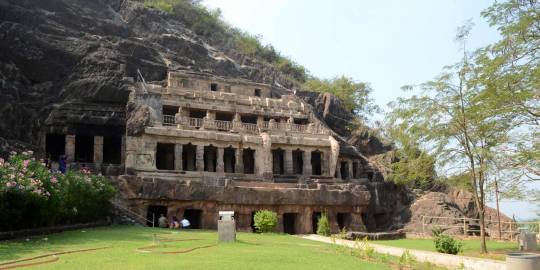
Varaha Cave Temple
Varaha Cave Temple (also Varaha Mandapa) is a rock-cut cave temple located at Mamallapuram, on the Coromandel Coast of the Bay of Bengal in Kancheepuram District in Tamil Nadu, India. It is part of the hill top village, which is 4 kilometres (2.5 mi) to the north of the main Mahabalipurm sites of rathas and the Shore Temple. It is an example of Indian rock-cut architecture dating from the late 7th century. The temple is one of the finest testimonial to the ancient Hindu rock-cut cave architecture, out of many such caves also called mandapas. Part of the Group of Monuments at Mahabalipuram, the temple is a UNESCO World Heritage Site as inscribed in 1984 under criteria i, ii, iii and iv. The most prominent sculpture in the cave is that of the Hindu god Vishnu in the incarnated form of a Varaha or boar lifting Bhudevi, the mother earth goddess from the sea. Also carved are many mythical figures.
Varaha Cave Temple is located on the hills of Mahabalipuram town, 4 kilometres (2.5 mi) to the north of the main Mahabalipurm sites of rathas and Shore Temple, on the Coromandel Coast of the Bay of Bengal of the Indian Ocean. Now in the Kanchipuram district, it is approximately 58 kilometres (36 mi) from Chennai city (previously Madras) and about 20 miles (32 km) from Chingelpet.
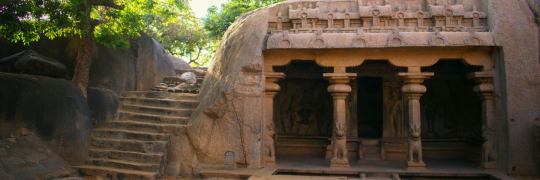
Masroor Temple at Kangra
The Masrur Temples, also referred to as Masroor Temples or Rock-cut Temples at Masrur, is an early 8th-century complex of rock-cut Hindu temples in the Kangra Valley of Beas River in Himachal Pradesh, India. The temples face northeast, towards the Dhauladhar range of the Himalayas. They are a version of North Indian Nagara architecture style, dedicated to Shiva, Vishnu, Devi and Saura traditions of Hinduism, with its surviving iconography likely inspired by a henotheistic framework. Though a major temples complex in the surviving form, the archaeological studies suggest that the artists and architects had a far more ambititious plan and the complex remains incomplete. Much of the Masrur's temple's sculpture and reliefs have been lost. They were also quite damaged, most likely from earthquakes.The temples were carved out of monolithic rock with a shikhara, and provided with a sacred pool of water as recommended by Hindu texts on temple architecture. The temple has three entrances on its northeast, southeast and northwest side, two of which are incomplete. Evidence suggests that a fourth entrance was planned and started but left mostly incomplete, something acknowledged by the early 20th-century colonial era archaeology teams but ignored leading to misidentification and erroneous reports. The entire complex is symmetrically laid out on a square grid, where the main temple is surrounded by smaller temples in a mandala pattern. The main sanctum of the temples complex has a square plan, as do other shrines and the mandapa. The temples complex features reliefs of major Vedic and Puranic gods and goddesses, and its friezes narrate legends from the Hindu texts.
The temple complex was first reported by Henry Shuttleworth in 1913 bringing it to the attention of archaeologists. They were independently surveyed by Harold Hargreaves of the Archaeological Survey of India in 1915. According to Michael Meister, an art historian and a professor specializing in Indian temple architecture, the Masrur temples are a surviving example of a temple mountain-style Hindu architecture which embodies the earth and mountains around it.
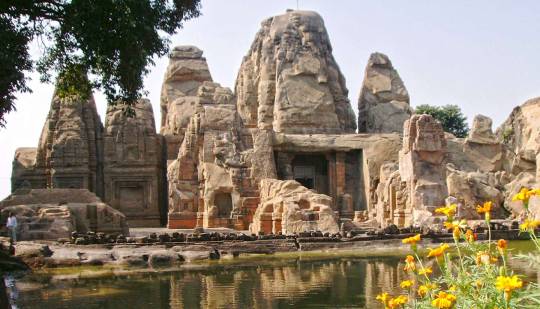
Bojjannakonda Buddhist Site,
Bojjannakonda and Lingalakonda are two Buddhist rock-cut caves on adjacent hillocks, situated near a village called Sankaram, which is a few kilometres away from Anakapalle, Vishakhapatnam in the Indian state of Andhra Pradesh. The sites are believed to date between 4th and 9th Century A.D, when the Buddhism (Hinayana, Mahayana, and Vajrayana) flourished at Sankaram (Sangharam as it was called then). The real name of Bojjannakonda was actually Buddina Konda but the people can't pronounce it properly by telling the name repeatedly so it was changed to Bojjannakonda . Sankaram, a small village, is situated about a mile to the east of Anakapalli in the Visakhapatnam district of Andhra Pradesh. A short distance to the north of the village are two hills, the one on the east called Bojjannakonda and the other on the west called Lingalakonda, both of which are surrounded by paddy fields. The hills contain numerous monolithic stupas, rock-cut caves, chaityas and monasteries forming one of the most remarkable Buddhist establishments in Andhra Pradesh during the period from the 4th to the 9th Century CE. The name of the village Sankaram is evidently a corruption of Sangharam (Boudha-arama, i.e., vihara) as these Buddhist establishments are generally known.

Guntupalle Buddhist Site,
The Guntupalle or Guntupalli Group of Buddhist Monuments is located near Kamavarapukota, West Godavari district, in the state of Andhra Pradesh in India. It is around 40 km away from Eluru. The rock-cut part of the site has two Buddhist caves, a chaitya hall and a large group of stupas. The chaitya hall has a rare carved stone entrance replicating wooden architecture, a simpler version of that at the Lomas Rishi Cave.There are remains of structural buildings in brick and stone, including remains of two vihara made of brick, as well as excavated caves at two levels, including an unusual structural chaitya hall (that is, one built above ground). The core of this consists of the stone stupa with an enclosed path around it allowing ritual parikrama (circumambulation). They mostly date to 200-0 BCE, with some sculptures added later. The main building above ground is in brick, around a stone stupa, with over 30 smaller stupas on a terrace in front of it. There are ruins of two other buildings.
During excavation, three relic caskets were found. The caskets had many precious elements like gold, silver, crystal beads. The bronze image of Padmapani was found along with one of the caskets. The inscription on the casket was in the Devanagari script which indicates the year as from the 9th to 10th century CE.
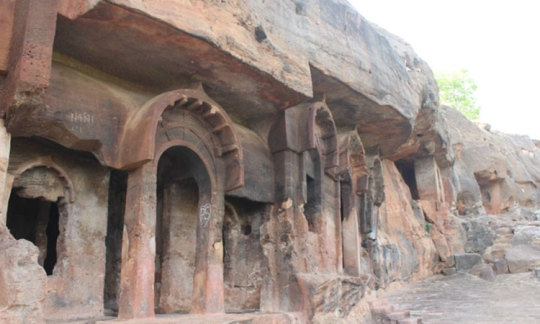
Ramatheertham,
Ramateertham is a village panchayat in Nellimarla mandal of Vizianagaram district in Andhra Pradesh in India.It is about 12 km from Vizianagaram city. It is a famous Pilgrimage and also Ancient Historical Site since 3rd Century BCE.Ramateertham is one of the places made sacred by a traditional connection with Rama. The temple and village at the base of a chain of hills of solid rock on which are some perennial springs of water, and various places each in a way associated with the name of Rama. The Jains have also had a residence here, their remains consisting chiefly of natural caves with slab sculptures set in them, and some small ruined brick temples. It is one of the few places in this direction where Jaina remains exist. The only notice of buried remains here is in Sewel's Lists (Vol. I, page 15) where mention is made of great heaps of broken bricks and cut stones on a hill which is difficult of access. It was hitherto unknown that these remains were Buddhist, and this I only discovered last season. Since that time, excavations have been conducted and resulted in the unearthing of an extensive part of what has undoubtedly been a large and important Buddhist monastery.
The Black Granite hills on which you can find the ruins of some Buddhist and Jain structures known as Bodhikonda. Apart from it there are two other hills by name Gurabaktakonda (Gurubhakthulakonda) and Ghani konda (also known as Durga Konda) on which you can find a 3rd-century BC Buddhist Monastic complex remains and rock-cut caves with Jain Tirthankara images on the walls of the caves.
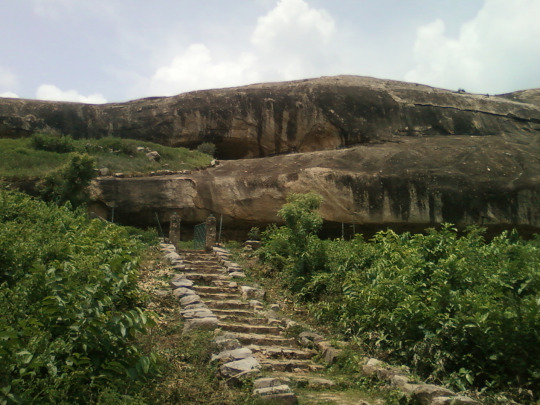
Aihole
Aihole (pronounced "Eye-hoḷé"), also referred to as Aivalli, Ahivolal or Aryapura, is a historic site of ancient and medieval era Buddhist, Hindu and Jain monuments in Karnataka, India dated from the sixth century through the twelfth century CE, though the most of the surviving monuments date from the 7th to 10th centuries. Located around an eponymous small village surrounded by farmlands and sandstone hills, Aihole is a major archaeological site featuring over one hundred and twenty stone and cave temples from this period, spread along the Malaprabha river valley, in Bagalakote district.Aihole is 22 miles (35 km) from Badami and about 6 miles (9.7 km) from Pattadakal, both of which are major centres of historically important Chalukya monuments. Aihole, along with nearby Badami (Vatapi), emerged by the 6th century as the cradle of experimentation with temple architecture, stone artwork, and construction techniques. This resulted in 16 types of free-standing temples and 4 types of rock-cut shrines. The experimentation in architecture and arts that began in Aihole yielded the group of monuments at Pattadakal, a UNESCO world heritage site.
Over one hundred Aihole temples are Hindu, a few are Jain and one is Buddhist. These were built and coexisted in close proximity. The site is spread over about 5 square kilometres (1.9 sq mi). The Hindu temples are dedicated to Shiva, Vishnu, Durga, Surya and other Hindu deities. The Jain Basadi temples are dedicated to Mahavira, Parshvanatha, Neminatha and other Jain Tirthankaras.[10] The Buddhist monument is a temple and small monastery. Both Hindu and Jain monuments include monasteries, as well as social utilities such as stepwell water tanks with artistic carvings near major temples.
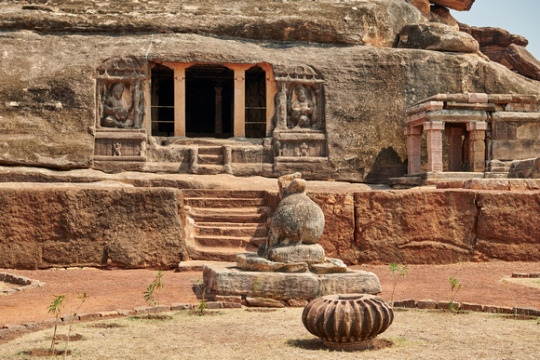
1 note
·
View note
Photo
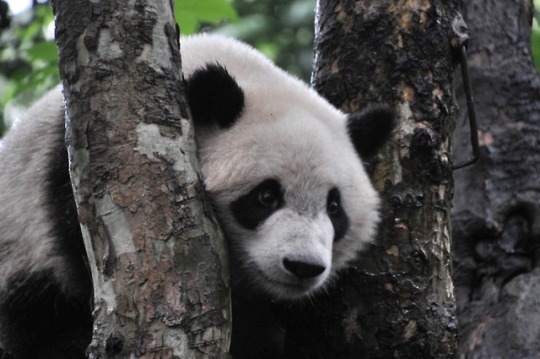
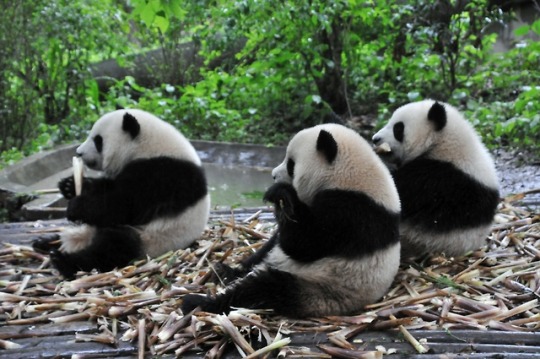

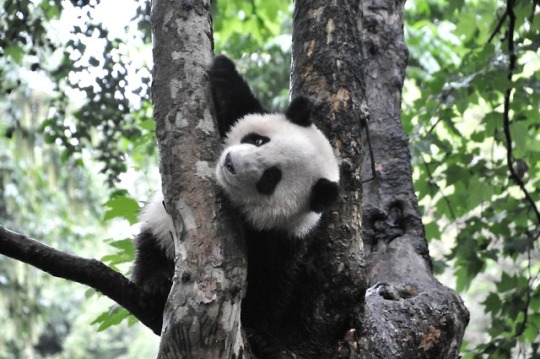






•• Panda Panda Buddha in Chengdu••
Chengdu has two main selling points: giant pandas and a giant Buddha. Which is pretty good in my opinion.
●Giant Panda Breeding Research Base
Is a research base of panda enclosures focused on its extensive breeding program to help save this endangered species by increasing their numbers. It has 120 giant pandas and 76 red pandas, which are more like foxes and if you’ve ever seen Kung Fu Panda is actually the species of the main Kung Fu teacher.
Sadly it rained the day we were there so it was a life and death mission manuevering through the sea of umbrellas without getting stabbed to get closer to the enclosures. Despite this, the Pandas were just as cute and cuddly looking as all the posters and cartoons would have you believe. I spent 20 minutes watching one that obviously wanted to get down from his perch in the tree but couldn’t quite figure out how to get his little round self safely to the ground. Another three were sitting in a line happily chomping down on bamboo perfectly matching.
●Giant Buddha Lè Shān
Giant isn’t an understatement- at a looming 71 meters tall the Lè Shān Buddha presides over the rushing rivers from his cliff throne. Just one of his toes stands 8.5 meters high, taller than four men standing one on top of the other.
The massive building project was conceived to appease the angry rivers coming to a head here and try and save some of the illfated ships that would sink trying navigate these violent currents. Started in AD 173 by monk Haitong, it took over 90 years to carve out the cliff and create this jaw dropping sight. Funnily enough the project even worked: after the gaint buddha was made the rivers calmed and no longer posed a danger to ships. Whether this was caused by the holly powers of the Buddha or by the copious amounts of cliff rock -from carving out the Buddha- deposited in the river that significantly changed the river bed and how the currents flowed… is unclear. The world works in mysterious ways.
Unfortunately we were not the only ones that thought this giant ancient buddha might be worth a gander and hence after the hour train to Lè Shān we found ourselves surrounded by hoards of other tourists. We were smooshed in the press of people descending down the zigzag staircases that brought you down the side of the cliff face from the top of Buddha’s head to his massive toes. Still an awe inspiring site, looking pretty spiffy for 1,200 years old.
6 notes
·
View notes
Text
Animal Sentai Zyuohger - Episode 43
Okay, let’s squeeze this in. It’s Animal Sentai Zyuohger, episode 43! Here we GO!
-We begin in the Big Bow, where Azald is playing darts. With nobody else playing the Blood Game, Azald is out of urgency-fucks to give…But Genis reminds him that Kubar’s little rebellion was absolutely a fine entry in the game. You’re going to need to outdo it to get anywhere…
-While down on Earth, Misao arrives at the cabin, having finished his proper hospital release! And he’s brought Mario a fine gift, a top-notch whetstone for his carving tools.
-Of course, the zyumen don’t know Christmas, so Yamato has to explain the holiday to them, much to Mario’s bogglement…But the idea of a Christmas party has everyone fully engaged…When the girls grab Tusk and Leo and they’re off. Because they realized they haven’t done right by Mario. This man took them into his home, welcomed them into his life, treats them like his own family…A Christmas present might just be a small gesture, but it’s a symbolic one, and one they’re going to live up to.
-Opening!
-Episode 43: The Christmas Witness
-So thus begins the hunt. Their first effort is a lovely knitted sweater. …Except they don’t have anywhere near enough scratch to buy it. Leo and Amu indulged in foods, and Tusk spent not only the spending money that Yamato and Mario gave him, but his part-time job check, on books. It’s not like he knew there was a gift giving holiday coming up!
-But then, a vibe. What’s coming down? A devilish painter of an MotW, who puts emoticon masks on people that won’t come off! And he can even paint things into existence, like a Buddha statue manifesting in the middle of the street and causing a bunch of crashes!
-Our four arrive, already transformed…Aaand get a samurai sent after them. A samurai, a monk, and a clown! One of these things is not like the other. So the MotW makes his escape, while they finally fight off the painted foes…
-Back at the cabin, Yamato and Mario are putting up the Christmas tree. They haven’t had a party here since Yamato was a little kid…And then out comes the question about the others going back home for New Years. It’s…Complicated…
-Mario figured it was complicated. …Are they in a situation like yours, Yamato? No, no. Yamato’s staying away from his home. They…They can’t go home.
-…Whatever happens, Yamato, you can tell him anything. He’s always got your back.
-Back with the others, they’re grumbling about their lack of success in war and in Christmas both, when they pass by what looks like a stationary shop selling Christmas cakes? Surely you’d want to get your holiday goods from a bakery…
-But the owner comes out because this IS a bakery! That monster just painted over it with the facade of a stationary shop! And now he’s got no customers, at what’s supposed to be his busiest time of the year!
-And then Amu gets a plan. They need work, you need sold cakes, pay them to take a stock down to the park and sell them old school.
-And that’s how they find themselves down at the park…But nobody cares. Okay, they need a gimmick. …Right, fuck it. All out? All out.
-Which is when Misao races into the cabin, because big trouble! Check the news! …Oh god the others are selling cakes in full animal costumery. Why?!
-And to make things even messier, Mario has to go jump on the next flight to Canada! Why Canada?! To get a very rare wood at a very good price. Have fun with yourselves and he’ll be back before New Year’s, he promises!
-So that’s two absurd wrinkles in one shot, as Yamato and Misao have to go see what these ridiculous idiots are doing at the park…And…
-And, they’re actually having a lot of fun, and everyone seems happy, and Yamato can’t help but think, this is how it should be…You know?
-They’re soon back at the cake shop, with a hearty pay…And then it’s to the store to buy that sweater. …But they forgot to account for sales tax, and are literally like 500 yen short. FUUUUUCK. But Yamato finds them, and he’s got the difference, guys. And no complaining. He owes his uncle at least as much as the rest of you. …But the bad news is, he’s not going to be there for the party. He’s heading overseas for a few days. …Nope nope NOPE he is getting this sweater before he goes! Come on they gotta catch him!
-Of course, then they get vibes. And the MotW is on them! Welllll shit. This is, quite possibly, the worst time. Yamato and Misao step up, and the rest of you keep going! They’ve got this guy!
-…And then Azald corners them. Mother fuck! And that’s when Mario hears explosions as he’s heading to the airport, and turns to investigate and make sure people are okay…
-When the entire crew is rocked by explosions, their armors failing…And Mario sees his nephew and friends faced down by horrid monsters! He’d got to do something to help them!
-They’re angry enough that the animal faces come out, and all the things that Mario thought were tricks of the light were nothing of the sort…And Instincts Awakened! Champion of the soaring sky, ZYUOH EAGLE! Champion of the surging waves, ZYUOH SHARK! Champion of the savannah, ZYUOH LION! Champion of the forest, ZYUOH ELEPHANT! Champion of the snowy drifts, ZYUOH TIGER! Champion of the world, ZYUOH THE WORLD! Animal Sentai, ZYUOHGER!
-This planet, is under their protection! Eagle charge in, and Mario remembers that hero saving his life…And realizes, his nephew’s been fighting all this time…
-Instincts Awakened! Gorilla brings out the big guns, and The World flips to WOLF for cover fire to deal with Azald! While the others go Beast Unleashes on the MotW, cutting into him from all sides as they throw down a zyuman-only finisher! The masks, the facades, it all finally breaks as he falls…
-Which just leaves Azald. Well, until he calls for Naria to bring on a Continue. Which she pops into the slot before anyone can stop her, of course. Wellllll shit. And he starts painting mega mooks into existence! And lots of them, too! So this is bad.
-The World gets sent to back them up, while Gorilla flips to WHALE! He’s got Azald!
-Animal Kingdom Combination! WILD TOUSAI KING! Mecha fight. The mooks just keep on coming, which makes things even more complicated…
-As Whale manages to put a shot into Azalea’s chest that locks him up…But as soon as Cube Whale comes in and he sees Azald, he just starts firing full force into the bastard! Azald’s forced to pull a retreat, until Whale manages to get his partner to focus….
-Back at mecha scale, Complete Animal Combination! WILD TOUSAI DODEKA KING. Even bigger mech! Mecha fight. ZYUOH DODEKA DYNAMITE STREAM! Explosion!
-And Mario is very boggled. Most of all, why Yamato didn’t tell him about any of this…But he’s got to focus. Get that wood, come back, have a real talk with Yamato.
-In the aftermath, they didn’t manage to get their present to Mario in time, but they’ve still got plenty of hearty food and friends to share it with…Though Yamato keeps thinking of that moment in the park. Could that moment come to pass again…? …He can only hope.
-Credits!
Real talk I totally did not expect him to actually be surprised. But I do wonder if we’ll get to explore that character side of things next time, to say nothing of the mystery of Azald, next time in episode FORTY FOUR of Animal Sentai Zyuohger! Wait for it!
1 note
·
View note
Text
Mysterious Masroor
Our architectural inclination took us (H-K & family) to Mysterious Masroor temples in January 2018. Why mysterious? Because it has indistinct stories related to its existence. Lot of stories and questions came across by visiting this place and we bring it on to you for answers and for more inquisitiveness (Post in the comment box :) through our photographic journey.
Location: Masroor, Lahalpur, Himachal Pradesh which is 59.6 km from Jia village (Of course Jia is our reference point :)
Time taken: 1h 43min drive from Jia.
Altitude: 2500 ft above sea level. Jia is at 4114 ft. This information actually helps in shedding off your layers :P.

A great little drive with changing landscapes, even the sand color changes from brown to a reddish tone, made our way to these majestic rock cut temples. The temple complex caged in a metal railing boundary is accessed from the back side raising the curiosity of the visitor. The temples are set in the terrain in such a way that one doesn’t realize its magnificence until you see from the front. Moreover, the reflection of temple in the ‘kund’ opposite to it glorifies its presence.

It is stated that it was built for Draupadi, wife of Pandavas for her ablution purpose during their exile period from the kingdom. Really? These temples are that old and were built around 3081 BC? Let’s take a sneak peek into the other facts as well,
Story 1 (3081 BC) – Local tale narrates that around five thousand years ago; Pandavas of the Mahabharata built this temple and resided here during their incognito exile. The temples remain unfinished because they shifted from here as their identity and location was revealed.
Story 2 (Around 8 -9th Century AD) – It is assumed that these temples were built during the time same as of Kailasa temple at Ellora, Aurangabad, Maharashtra because of being rock cut in nature. It is suggested by scholars that this could be the work of unknown imperial rulers of Jalandhara kingdom of Punjab plains and might have remained as a capital-in-transit of the Jalandhara rulers and later the capital shifted to Nagarkot i.e. the Kangra Fort.
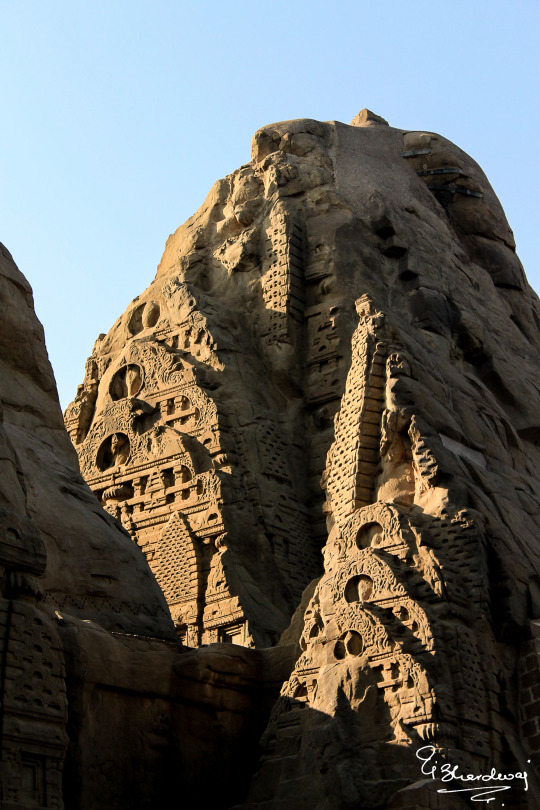
Story 3 (Tadda!!! - The Discovery) - The temples were first noted among the Objects of antiquarian interest in the Punjab and its dependencies, Lahore, 1875. However it continued to be hidden until 1913 H.L.Shuttleworth discovered and later description of these temples was published in 1915 by H. Heargreaves.
Story 4 (Shaivite converted to Vaishnavite in 1980’s?) – The main temple is known as the ‘Thakurdwara’ which means God’s (Thakur) place (dwara) i.e. the place of God. It enshrines stone images of Ram, Laxman and Sita which seems to of recent date. It is said that originally it was a Shiva temple because of the presence of Shiva on the doorway lintel of the central shrine and other Shaiv figural forms found in the temple complex.
But where’s the Nandi? Was it destroyed? Because presently a sacred Tulsi plant resides at the entrance of the temple shrine. Traditionally in Shiva temples, Nandi (the gate- guardian deity of Lord Shiva, depicted as a bull which also serves as the mount to the god Shiva) sits on a porch in front of the central temple.

Other visual thing that pops in our minds is the Buddha or Mahavira resembling figures on the Shikharas of the temples. Was there any relation to Buddhism or Jainism?
There might be some relation to Jainism because there is an ancient Jain temple of Lord Adinath present in the Kangra Fort also which was established by Raja Sansar Chand (I) in 1523 AD. So, there could be some influence.
OR
If these temples are built around the late medieval period under the Gupta patronage when Ajanta-Ellora caves were built then there could be some Buddhist influence as well on the artists while building this beauty.

The ‘May’ or ‘May not’ situation definitely got to dig us in to books like:
Architectural Heritage of Himachal Pradesh: Origin and development of Temple style - S. Laxman Thakur
Coronation of Shiva-Rediscovering Masrur Temple – N.K. Singh
Temples of Himachal Pradesh – Shantilal Nagar
Surprisingly, very detailed information and references is provided in the Wikipedia link below which also provides drawings as documented by historians.
https://en.wikipedia.org/wiki/Masrur_Temples
Architecturally, Masroor temples are one of the early phase temples built in Nagara style in Himachal Pradesh. Due to the remote locations and very secluded lifestyles of the people in the mountains there were very few shrines built in Nagara style temples before 8th century.

The main shrine faces north east and two cruciform shrines, which are independently carved from the main ridge, flank the both sides of the temple. In the present scenario it is difficult to identify the no. of Shikharas. According to various scholars fifteen or seventeen Shikharas of Valabhi type (rectangular buildings with a roof that rises into a vaulted chamber) are observed.

Iconography on the temple walls and Shikharas has weathered a lot over the period of time. Efforts are being done by Archeological Survey of India (ASI) to conserve these temples. Would love to explore the techniques of restoration in our upcoming blogs.

The temple is carved out of a natural sandstone rock of size 148ft x 137ft. The ‘kund’ in front of the temple is around 165ft x 82ft. Height of the temple is varying from 40ft- 50ft ranging according to different shikharas (10 times of me :P). The photo below can give you idea of scale in relation to human beings.
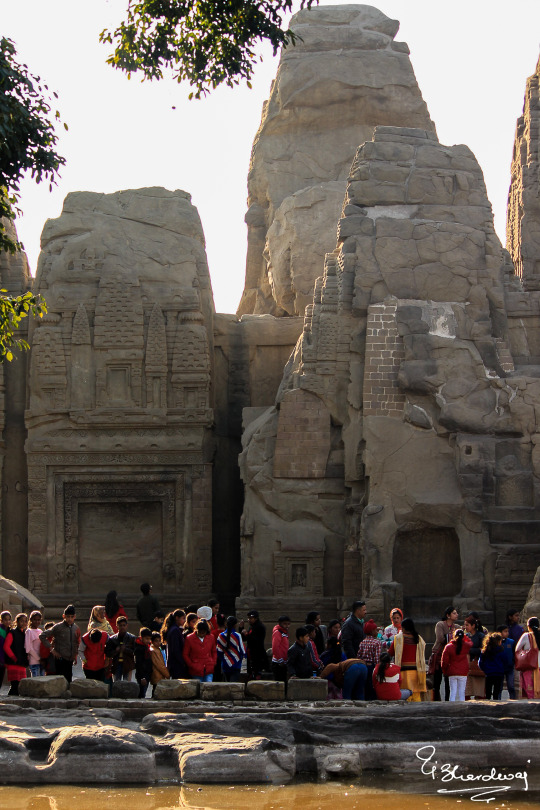
Imagine a sight of lighting diyas (lamp) or water lilies in pink in the pool. What an abode to God! We are mesmerized :)
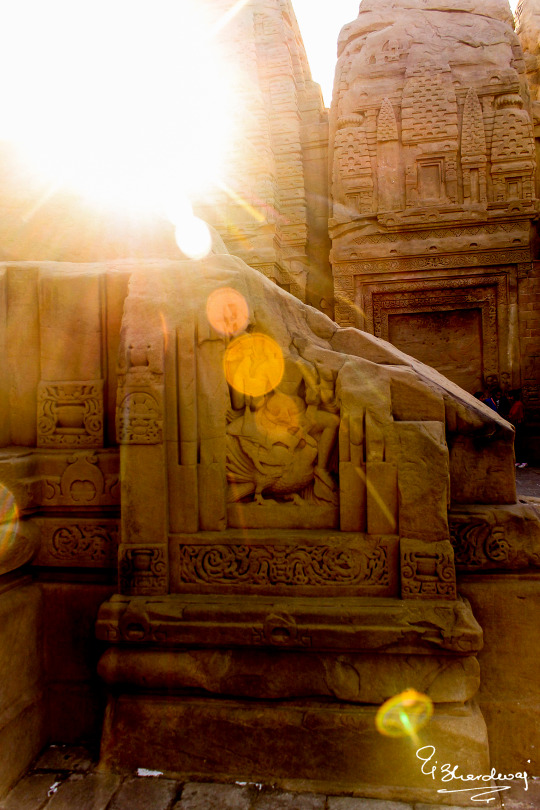
End Note: The Photographs included in the blog is solely H’s skill & talent and the writing content is researched by K and reproduced by going through the following links and books:
Ancient Monuments of Himachal Pradesh – O.C. Handa
Kangra Darpan – Satish Bassi
Mountains and Temples- A study of Architectural Evolution of Hindu temples in Kangra (9th to 18th century A.D) – Unpublished Thesis, CEPT University – Karan Sharma
http://www.academia.edu/12616519/Architecture_of_the_Rock-Cut_Temples_of_Masroor
http://123himachal.com/temple/masroor.htm
http://www.wondermondo.com/Countries/As/India/HimachalPradesh/Masroor.htm
http://www.mysteryofindia.com/2015/12/rock-cut-temples-masroor.html
4 notes
·
View notes
Text
Rock Art in the Upper ~Indus Region
Harald Hauptmann
Rock Art in the Upper ~Indus Region
The majestic peaks of the Himalayas with their I4 eight-thousanders
towering above the scenery, separate the Tibetan Plateau and the South
Asian subcontinent on a length of 2,500 km. They do not. though. form an
impassable barrier to man, as evident from its western part comprising
the Hindu Kush, the Western Himalayas. and the Karakoram in the north
of Pakistan. From the Tarim Basin, several paths lead over passes more
than 4,000 metres high over the glaciers of the mountain chains of the
The Karakoram down to the deeply cut canyons of the Indus river and its tributaries.
This network of routes that connects the northern steppe regions
with Kashmir and the Indo-Pakistani lowlands has been frequented by
hunters and nomads since the end of the Ice Age as well as during historical
times by merchants with their caravans, by Buddhist pilgrims, Chinese
emissaries. and foreign conquerors.
The high mountain range that today encompasses the Northern Areas
of Pakistan formed, on the one hand, the shortest connection to the trading posts in the Tarim Basin for Indian caravans, but on the other hand,
it was also, in the opposite direction, at least temporarily the gate to India
for Sogdian merchants from Samarkand. A southern section of the
legendary Silk Route led through the Indus Valley. It consisted of a network
of trading routes that started in the ancient Chinese imperial cib of
Changan and led to the Mediterranean Sea via the oasis cities in the Tarim Basin, such as Khotan, Yarkand and Kashgar as well as Turfan and Kucha.
The first description of the passages leading from the Tarim Basin via the
Hindu Kush and Karakoram to the kingdoms ofJibin (Chi-pin) and Nandou
- kingdoms that are located in the regions around Kapisa-Peshawar
and Gilgit - is provided by the chronicle Han Shu (25-221 B.c.E.) from the
time of the Han dynasty. The difficult route continues until it reaches the
"Hanging Passages", spanning deep chasms, which are described as life-threatening
challenges for man and beast. This toponym might either refer
to the paths running in vertiginous heights along the scarps above the
Hunza and the Indus rivers or, more probable, to the shaky rope bridges
stretching over mountain torrents. The adventurous itineraries of Chinese
pilgrims vividly narrate the arduous journeys across the snowcovered
peaks of the "Onion Mountains" down to the Indus Valley. The
earliest among these pilgrims, according to the tradition, was the monk
Faxian (317-~zo), who started his 15-years-long pilgrimage in the imperial
city of Changan. After having scaled the Karakoram Faxian reached
the kingdom Jiecha (Kie-cha), probably modern Baltistan, and the small
kingdom of To-lieh or ~uoliin the year 400. This place was of supraregional
religious importance, as its sanctuary was most prominent for a
gilded wooden statue of Maitreya, the future Buddha, which was over
20 metres high. Only afterwards, Faxian crossed the "Route of the Hanging
Passages", i.e. the Indus river, to arrive at his destination, the kingdom
of UddiyHna, in Swat. In the report of the most famous pilgrim,
Xuanzang (629-645), a Chinese Marco Polo, who had also chosen the
southern route over the "Onion Mountains" to Gandhara. the miraculous
Maitreya statue and an adjunct monastery is described again at a place that
he calls Ta-li-lo. This location is probably to be identified with a religious
centre such as the one in the Chilas Basin.
Apart from these reports and some later chronicles, there exist no
other historical sources on this region. Yet, there is another group of
monuments giving a deeper insight into the history of this high mountain
region: A collection of rock art images ~~niiqn ~the~ire diversity and ex Fig.
2 Hodur-West. Stupa-Buddha group
traordinary in their quantity. Carved into the rock faces and boulders of
the Indus gorge, reaching from Indus-Kohistan to Baltistan, and, even
beyond, to Ladakh and Tibet, expands one of the worldwide largest and
most impressive rock art provinces. These monuments can also be found
on the important pass routes and subsidiary valleys of the Indus river be
it along with the Gilgit, at Yasin, in Hunza up to the Kilik pass. along the Shigar
or the Shyok in Baltistan. They concentrate along the Fully developed
routes to both sides of the Indus river. having their richest clusters within
a stretch of more than 100 kilometres between Shatial in Indus-Kohistan
and the bridge of Raikot. In these rock art galleries, which are centred
around Chilas and Thalpan in the district of Diamer at the foot of the
8,125 meter high Nanga Parbat, over 50,000 rock drawings and more than
5,000 inscriptions represent a period lasting from the late Stone Age to
the Islamisation of the mountain region that took place in the l6th century.
The remarkable diversity of these engravings, also known as the
"guest book of the Silk Route", mirrors the history, the cultural and social
traditions and the religious ideas of local as well as immigrated peoples.
The existence of this rock art as well as that of the two monumental
Buddha reliefs of Kargah near Gilgit (fig. 7) and Manthal near Skardu in
Baltistan (fig. 8) has already been known since the 19'~c' century. But only
after the completion of the 751 km long Karakorarn Highway - the direct
connection between China and Pakistan - Karl Jettmar. Heidelberg, and
Ahmad Hasan Dani, Islamabad, could commence systematic research of
the rock art province. The work started as a joint German-Pakistani project
in 1980 and in 1984 the project was taken over by the Heidelberg
Academy of the Sciences and has continued with the approval of the Pakistani
Department of Archaeology and Museums in Islamabad to date.*
With the onset of the ~olocene(9,500-6,200 B.C.E.),the milder climate
in this region went along with heavier precipitation that also favoured a
lush vegetation in the valleys and thus permitted the expansion of diverse fauna. Tllese propitious environmental conditions. starting with
the melting of the large glacersa, ttracted groups of hunters who created
the earliest rock images ofwild animals: depictions of ibex, markhor, and
bharal (~imalayanb lue sheep), but also hunting scenes that occasionally
even feature depictions of humans (line drawings 1.1-2). The artist's
symbolic presence seems to be expressed by representations of hand and
foot prints. The pictures of animals. usually engraved in silhouettes and
showing a subnaturalistic style, find their counterparts in the rock art
provinces of Western Asia and Siberia, ranging from the late Stone Age to
Neolithic times.
Impressive images of large, naked figures of men can be ascribed to the
Bronze Age, the late 3d millennium B.C.E. Depicted in frontal view, with
arms outstretched (line drawing 1,3), these "giants", found as single
figures or in pairs, are attested in more than 60 examples from prominent
places in the lndus Valley to Ladakh and might represent images of
ghosts, demons, or local deities. Alternatively they might just depict
shamans. In isolated cases the faceless giants are connected with images
of masks (line drawing 1,4), that, if compared with the Siberian Okunev
culture, could be explained as relating to shamanistic actions. We can
only assign some rare rock art examples of wild animals or hunting
scenes, and some depictions of chariots, to the 2"hillennium B.C.E. The
earliest megalithic round tombs in lshkoman and Yasin can be ascribed to
this era as well.
With the beginning of the first millennium B.C.E.. a new population
appears in the Upper lndus region, which can be traced back to invasions
of Scytho-Sakian tribes. These steppe nomads that entered from Central
Asia and are known as Saka from the inscriptions of the Persian Great
King Darius 1 (522-485 B.c.E.) contr~bute numerous pictures of ibexes.
deer, and predators featuring the Eurasian animal style (line drawings
15-7). They correspond to animal bronzes discovered in ~cythimku rgans
from Kazakhstan and Siberia. With the eastern expansion of the
~chaernenid-Persian kingdom in the 61h century B.C.E. and the establishL~
neD rawrng 1 1 Dadam Das, 2 Barlo Das, 3 Thor.4 Z~yarat5, Kalat Doduk,Bo
6Turr1l Nala. 7 Dong Nala
Llne Drawlng 2 1-3 Thalpan.4-5 Chllas 11.6 Barlo Das, 7Thalpan.B Shat~al
ment of the Indian provinces of Gandhara and Hindu5 (Sind), also Iranian
influence reaches the Upper lndus Valley. This is reflected in perfectly
rendered images of stylized horses, mythical creatures in the characteristic
bent-arm, bent-leg posture that indicates flying, and particularly, in
warrior figures dressed in Western Iranian costumes (line drawings 2,l-3,
fig. 1).
Under the reign of the Kushan dynasty (1" century C.E.). Buddhism
started to spread as a new belief system in the Upper lndus region. With
the beginning of the earlier Buddhist era, lasting from the 1'' to the 3rd
century, the region enters the stage of history, as engravings of stupas
worshipped by pilgrims (line drawings 2,4-5), scenes abundant with
figures and enthroned rulers (line drawing 2.6), and in particular, the first
inscriptions in Kharosthi show.
In the area concerned, the Buddhism reached its peak between the 51h
and 8'l' centuries. Small principalities were founded in the high mountain
areas, such as the powerful Great Palur of the Palola %hi dynasty in the
east (called Bolor in Tibetan sources), with its centre in Baltistan as well
as Little Palur (Tibetan Bruia) on the high plateau ofGilgit with Yasin that
borders in the west. Starting from the 7'l' century, those principalities fell
under the alternating rule of twogreat powers: the Chinese rang dynasty
and the Tibetan kingdom. The third political power were the Daradas or
Dards living in the southern part of the Upper lndus Valley. The kingdomfs
centre was located in the Nilum-Kishaganga area and from its outpost
chilas, situated at one of the main crossings of the lndus (possibly
the seat of a regional ruler), it controlled the route across the Babusar
pass leading to Kashmir and Taxila, an old centre of the Gandharan kingdom,
The imagery is dominated by numerous remarkable depictions of
,t,pas and images of the Buddha (fig. 4) that were engraved on both sides
of the lndus river along the developed traffic routes secured by sentry
posts and fortresses, at places of smaller sanctuaries, at river crossings.
and at central locations such as Shatial. Thor, Hodur and Chilas-~hal~an,
and Shing Nala. From the numerous religious buildings, particularly the
~tupaso, nly one monument has been preserved in an aln~ostc omplete
state, the "Minar of the Taj Moghal" ofJutial above Gilgit. Very sporadi-,
rui ns of these monuments can be observed in the Gilgit valley, in
Baltistan in the Buddhist hill settlement of Shigar, or at Surmo in the
shyok valley.
Due to their high artistic quality and vibrancy, several scenic depictions,
showing Jritaka scenes, that is episodes narrating previous existences
of the Buddha, are outstanding among the rock art. Three of them.
the Vyiighri or Tiger Jdtaka (line drawing 3.1), the &ipaticaka litaka or
Jitaka of the Greatest Evils (line drawing 3. 2), and the Sibi jdtoko (line
drawing 3,3), which adorn rocks at Chilas and Thalpan, were apparently
created by one and the same artist and can be dated to the 6Ih century. An
older depiction of the SibiJdtaka in Shatial is comparatively crude and
compared to theJdtakos of Chilas-Thalpan, shows more Gandharan influence.
(fig. 3). The magnificent composition consisting of two pagoda-like
stupas hints at the close connections between the Upper lndus region and
the Buddhist world laying beyond the "snowy mountains", namely Kashmir
and Gandhara.
The temptation of the Buddha by the beautihl daughters of the demon
king MHra, a popular motif in Gandharan art, is depicted on a rock in Thalpan
(line drawing 3.4). With the gesture of touching the earth with his
right hand (bhirnispariarnudri). the earth opens, the earth goddess testi-
Fig 3 Shatlal $~bJi atako,Stupas and lnscrlprtons in Kharosthi,Brahm~.andS ogd~an
Fig. 4 Thalpan. Sitting Bllddha
Fig. 5 Chilas III.Late Buddhist stupa worshipping scene and warriors with battleaxes
F1g.6 Chilar X.Post-Buddhist battle are symbols
356
Fig 7
Standlng Buddha In
the Kargah Valley
near Gllg~t
Fig.8 Buddha rock of Manthal near Skardu In Balt~stan
fies to the ~uddha'sv ictory over MLra (rndravgaya), and the temptresses
away quickly. He overcame this obstacle, and was subsequently enlighted
under the Bodhi tree near Urubilva, where Gautama became the
Buddha in a night of the full moon of the year 528 B.C.E. The first sermon
he gave as the Buddha in the Deer Park of Sarnath near varanasi
(Benares) is one of the most important events of the Buddha legend. ~t is
at Thalpan in an impressive engraving (line drawing 3,5). This
scene, very popular in Buddhist art, shows the Buddha in the company of
his first five disciples, who were companions of SiddhHrtha during his
phase of asceticism. The deer park is represented by two gazelles at the
bottom, and the wheel symbolizes the act of teaching. Among the most
beautiful images at Thalpan is the enthroned Buddha with his companion
~odhisattvaV ajrapPni portrayed in the background (line drawing 3.6).
Due to its highly artistic execution and its distinctive importance for
Buddhist imagery, an image found in Hodur-West has to be put in line
with the most impressive examples of this art genre represented along
the Upper lndus (fig. 2). It shows two Buddhas both seated on a single
pedestal with a stupa between them. Apparently, this depiction hints at
chapter 11 of the famous Lotos Sitra; one figure represents Sakyamuni,
the historical Buddha, the other Prabhijtaratna, a Buddha of the past. The
motif of the two sitting Buddhas with Prabhijtaratna's "Stupaof the seven
precious materials" is very popular in the Buddhist art of Central Asia and
China, as its numerous examples in paintings in the cave temples of
Dunhuang, Lung Men, and Yungang as well as on relief steles show.
The historical background of the Buddhist era in this region is particularly
apparent in inscriptions. In the earlier phase, they are written in
Kharosthi, whereas in the later phase of the 3rd to ath century, they use, in
large numbers, the BrPhmTscript (cf. Falk, p. 14). The inscriptions are often
added to images and render personal names and consecration formulas.
Over 700 Sogdian, but also Bactrian, Parthian, and Middle Persian inscriptions
that predominantly concentrate at Shatial, which is now interpreted
as a former market place, attest the presence of Parthian and particularly
Sogdian merchants from Samarkand. We can trace drawings of
Iranian fire altars (line drawing 2.8), tamgas interpreted as heraldic family
signs or emblems of cities such as Samarkand, and even Nestorian
crosses. These images not only mirror the special importance of the Sogdians
as merchants on the Silk Route, but also as mediators between the
great religions such as Buddhism. Christianity, Zoroastrianism and
Manichaeism. Among the most beautiful creations are the saddled but
riderless horses, that are, in Central Asian fashion, depicted in the pace
gait (line drawing 2.7). Hephthalithic, i.e. Hunnic, as well as Turkish
names appear in the inscriptions, too. Thirteen Chinese inscriptions,
probably applied by merchants or pilgrims, and even one composed in
Hebrew testify to the ethnic diversity of the region. A Chinese graffito on
the rock formation of Haldeikish in the Hunza valley, through which the
path up to the important pass leading to Kashgar in Xinjiang runs, mentions
even an envoy of the dynasty of the "Great Wei". This site represents
the most important epigraphic monument so far discovered in the
The Karakorum, with 131 inscriptions in Kharosthi, Brahmi. Sogdian. Chinese, and Tibetan.
From the 4th century onwards. anti-Buddhist influences appear on the
scene, which indicates the arrival of foreign horse-riding peoples from the
surrounding high mountain ranges of the Indus Valley. This new ethnic
element is represented by crude depictions of battle axes, round disks
which could be understood as reminiscent of sun symbols, and pictures of
riders and warriors (figs. 5 and 6). Images of attacking war axe people evidently
besieging Buddhists practically seem to defend stupas inform
about the political and religious changes taking place in the area. In the
northern regions, for instance, Gilgit and Baltistan. Buddhist traditions
seem to have kept flourishing. though. The approximately three-metre
high relief of a standing Buddha at Naupur in the Kargah Valley near
Gilgit depicts him with the right arm held aloft in the gesture of fearlessness
and indicates growing influence of Tibetan style in the century as
does the relief on a six-metre-high rock in Manthal near Skardu in
Baltistan (fig. 8). b here, together with 20 smaller Buddhas the meditating
Buddha is seated in a Mandala-shaped assembly. This exceptional composition
is flanked by two standing ~odhisattvasP; a dmapani with the lotus
to the left, Maitreya to the right. Below, a ptimaghaka, the Vase of Plenty.
is depicted (fig. 8). The only large-sized rock painting of ~haghdon ear
Skardu. showing a magnificent stupa worshipping scene with the Raja of
Shigar, attests to the final significant period of prosperity of Buddhism
during the 12th century.
Islamisation started from Kashmir in the 16th century and has its most
impressive monuments in the first characteristic mosques with rich wood
carving decoration in Khaplu. Shigar, and Skardu in Baltistan.
#gandahar#silkroad#silk route#gilgitbaltistan#gilgitbaltistan❤️#river_indus#rockart#mighty karakoram#himalayas#hindu kush#history
0 notes
Text
Bhaja Caves

Interesting Facts about Bhaja Caves
A Short Trip to the Bhaja Caves
Located at Pune, near Lonavala (Maharashtra), Bhaja Caves, also known as Bhaje Caves dates back to 2nd century BC. These rock-cut caves stand straight at a height of 400 feet above the village of Bhaja after which it is named. The significant features of this Bhaja Caves, the stupas are really eye-catching and reveals a lot about Indian history during its time. Bhaja Caves is a must go for the people planning a trip to Maharashtra.
The architecture of Bhaja Caves
The most prominent sculpture of this cave is the Chaitya or Chaityagrha which reveals about wonder wooden architectures during those days. The Chaitya is a monument of wooden architecture with a vaulted horseshoe arched entrance as declared by the Archaeological Survey of India. It is one of the earliest amongst its types. The sculpts inside the cave reveal the use of tabla about 2000 years ago in Indian culture. Chaitya has Buddha reliefs along with unique reliefs from Indian mythology. A wooden beam inside the cave is inscribed with the names of donors of those times along with two more dates from 2nd century B.C. The cave at the end has a picturesque waterfall from which water during monsoon fills a small pool at the bottom of it.
The Eye Catchers
A group of 14 stupas of the Bhaja Caves, five inside and nine outside an irregular excavation is the breathtaking landscape of this place. These stupas are the creations of the monks, who lived in the caves and died at Bhaja and display an inscription with the names of three monks, Ampinika, Dhammagiri, and Sanghdina. The stupas mainly display the names of the monks and their respective titles. The stupas have been carefully and elaborately carved such that two of them have a relic box on their upper side. Names of monks have been titled with Theras.
The "SURANG"
As mentioned earlier, the Bhaja Caves is comprised of a number of caves.
One of them is an irregular vihara, about 14 feet square, having two rooms on each side and three on the rear part. The chaitya is decorated with ornaments all over the doors.
Rail pattern ornament, broken animal figures, the verandah is on the frontal side looks similar to the Pandavleni Caves.
The chaitya at Bhaja Caves is one of the earliest surviving chaitya hall, constructed in the second century BC. It has an 'apsidal hall with stupa'. The columns slope inwards in the imitation of wooden columns that are most probably necessary to keep a roof up. The ceiling was faced with a wooden facade which has completely perished now.
Rail pattern is noticeable, a few cells at the back and a bolt door system are found at the back.
This cave facing north is about 6 feet 8 inches wide and 25.5 feet deep, with 7 cells. Stone benches, square windows, stone beds are the key features of these cells.
It can be reached by stairs to the south of this cave. It is a small vihara 12.5 wide and 10 feet deep having a couple of semi-circular niches and a bench by its side.
There is another cave which looks like a small vihara. It is 18.5 feet long and 12.5 deep, with 5 cells, one of the cells has a bench in it. It has two inscriptions in it one of which is damaged. Cell door inscription portrays “the gift of the cell from Nagasawa, a Naya of Bhagwati”. There is an inscription over the two wells in a recess describing “a religious gift of cistern by Vinhudata, son of Koski, a great warrior.”
The final cave or the last cave is a monastery with a verandah. The door has guardian figures on both of its sides. All in all, Bhaja Caves is one of the oldest caves in India and one of the most important heritage monument portraying Indian Culture and art form dated back to 2000 BC.
Read the full article
0 notes
Text
Interestingly India has seen many folk or tribal deities from ancient and medieval eras being worshipped from time to time, especially during the time of epidemics, and other physical and natural calamities. Some of these deities, which retain their primitive aspects, are still venerated by many, and temples dedicated to them are seen spread across the rural parts of India. I have listed some of the better known tribal/folk devis that were once highly venerated in ancient and medieval India; among them some have lost their relevance over the sands of time, while few are still respected and worshipped by their faithful followers.
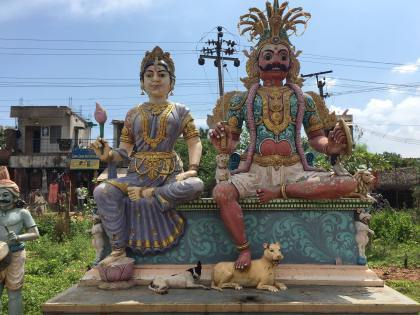
Folk deities in Pondicherry. They are the protective guardians of villages.
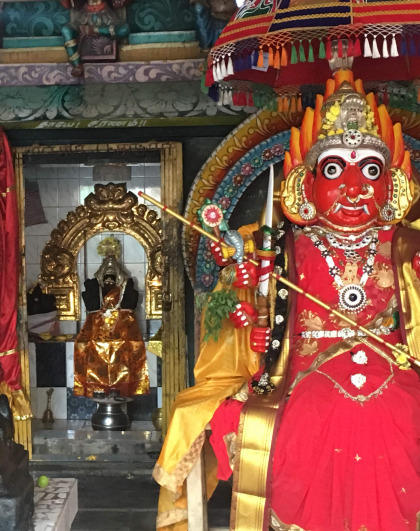
Local deities in a roadside temple in Papanasam, Tamil Nadu
Jara
The story of the king of Magadha, Raja Jarasandha, is well known. The Mahabharata gives details of his stand against Vasudeva-Krsna and the Pandavas , and finally his death in the hands of Bhima.

Bhima Slays Jarasandha: Page from a dispersed Bhagavata Purana Manuscript (Book 10) Date: ca. 1520–40 Medium: Ink and opaque watercolor on paper. Source

Bhima and Jarasandh Wrestling, by Raja Ravi Verma. Baroda art gallery
While the face-off and fight is well known, the focus remains away from the giantess or ogress Jara who had attached the two halves of king Brihadratha’s new born baby, and had given the baby his life back. It is from this Jara that the child was named as Jara-Sandha, which when translated means ‘united by Jara.’ While speaking to Brihadratha, Jara describes herself in the Mahabharata as a rakshashi who can change forms (kamarupini). She is worshipped both by the royal family and the common people as ‘Grihadevi’ (the devi of households), and she describes herself as being depicted on the house and palace walls as a young woman surrounded by children. As Jara says, blessed are the households that paint her in this form on their house walls, and those that don’t are cursed with poverty and unhappiness (Mahabharata II. 18, 1-6).

Jara merges two parts of Jarasandha. source: Wikipedia
Hariti
An iconography similar to the one that Jara who had described herself to be painted on house walls, is also seen in the depiction of Hariti , a Yakshini associated with Buddhism. Various Buddhist texts such as Mahavastu, Vinayapitaka, and even the Chinese version of the Sutrapitaka talk of Hariti, which show close iconographic and conceptual connections between the two folk deities. According to the story in Samyuktaratna-sutra of the Chinese Sutrapitaka, the Yakshini Hu-anh-shi (meaning happiness) was said to be patron deity of the kingdom of Magadha. Owing to her wishes from a previous birth the yakshini stole children from the people of Rajgir, which she used for feeding herself and her 500 sons. It is for this reason she was termed by the locals as Hariti (a thief) who asked Buddha to help them. Buddha stole Hariti’s youngest son and hid him, in order to teach Hariti a lesson, and when she came asking for his help, Buddha rebuked her for giving terrible pain to others by eating their children. A contrite Hariti asked Buddha how she would survive if she stopped stealing. Thereafter Buddha ordered all monasteries and houses to paint her figure along with the children on their walls, and offer them food. Hariti took a vow to protect all children, and thereafter survived only on a diet of pomegranates. Hariti was soon seen as the protector of women during childbirth and children. She also received bodhi from Buddha, which gave her powers to cure sick people and also fight against evil powers and black magic.
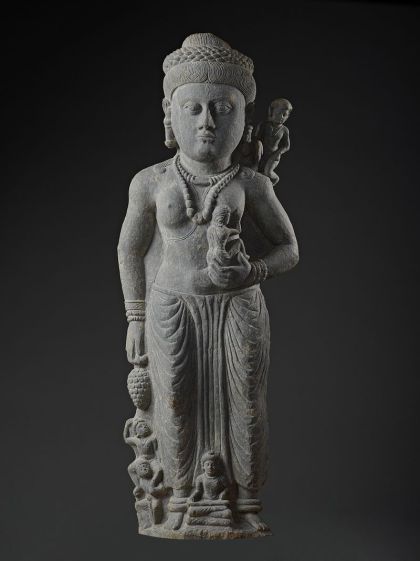
Hariti with children, 1st BCE, Gandhara. Swat Valley, Butkara I area, source: LACMA
Hieun tsang in his travel records mentioned a Hariti stupa from ancient Gandhara that had been built by Ashoka (identified as the Sare-makhe-dheri in Peshawar). Her worship had also spread to Korea, China, and Japan. In China, Kwan-yin (the female Avalokitesvara) was integrated with Hariti; while in Japan Kishi-mo-jin (also called as Kariteimo- check reference section for more details on this) was an ogress who later turns into a saint (Koyaso Kwan-non/Kish-mo-jin); and the story is directly derived from Hariti’s tale. According to the Japanese story Kishi-mo-jin or Kariteimo was once an ogress (like Hariti) who kidnapped and murdered the children of others, and fed their flesh to her children. While an ogress, she took help from her 10 demon daughters (the Jūrasetsu-nyo or Jurasetsu Nyoshin) to kidnap and murder the children. To teach her a lesson Shaka Nyorai (the Historical Buddha) hides one of her children, and after failing to trace her child, Kariteimo comes to Shaka, who then makes her understand the pain and suffering that she has caused to many parents. She repents and embraces Buddhism (the Lotus Sutra) along with her daughters, and together they become the protectors of children, and defenders and guardians of their faith (Nichiren sect).

Hariti and Panchika – Schist – 2nd Century CE – Gandhara – Jamalgarhi – Indian Museum – Kolkata (photo from Wikipedia by Biswarup Ganguly)

Hariti (Gandhara), 2nd c. CE, Chandigarh museum.

The bas-relief of Hariti with her children on inner northern wall of Mendut (Java), 9th c. CE. source: Wikipedia
Jara and Hariti were once the figure heads of two popular sects of folk worship, both in India and outside, and the conceptual similarities between the two are well established through different archaeological artifacts and literary accounts. Hariti, who was popular mainly in north and north western parts of India, were often depicted along with her husband Pancika (Kubera) along with the playing children, and some of her reliefs from the medieval era have also been found from Bengal.
Jyestha or Alakshmi
Another interesting deity who was once popularly worshipped in south India is Jyestha devi. Tondaradippodi (Bhaktanghrirenu), one among the Alwar saint (a devout Tamil Vaishnava saint), is heard lamenting in his 8th c. CE verse about how the foolish common people would worship Jyestha devi of low origin, for good health and prosperity, instead of worshipping his lord, Vishnu deva. This lament shows quite clearly that Jyestha devi was once very popular among masses, so much so that even the powerful families, including royal members, succumbed to her influence too. Hence, it is not surprising to find Jyestha devi in early temples and temple walls, even though she is no longer worshipped. The Bodhayana Grhyasutra has an entire chapter on the worship of this devi who rides a chariot pulled by lions with tigers following her, and is variously named as Jyestha, Jyaya, Nirrti, Hastimukha, Kapila-patni, and Vighnaprasada (Shama Sastri, pp. 294-296).
Jyestha devi with her children. Photo sourced from internet
There is an interesting story associated with this devi in a Shiva temple in Tirupparangunram near Madurai. it is believed that a Pandyan queen of 8th c. CE had sculpted a Durga rock shrine where she had got the murti of Jyestha devi carved in half relief (Rao, 1914). However, over time, as Jyestha devi’s worship declined, the central figure of her got draped in a man’s attire, and she was then worshipped as Subhramanyam. The figure on her right with the bovine head (Jyestha devi’s son) was seen as Nandikesvara, while her daughter on her left became Subramanyam’s first wife.
These changes over time stand as evidences of changing cultural and religious practices that keep altering as per sect popularity and need of the day.
Another interesting story is associated with Jyestha devi and a Chola princess who was supposedly born with the head of a jackal. The grieving father prayed to god to change her face, and was asked in a dream to build a temple for Shiva in the Nangapuram village (Trichinopoly district) that would cure his daughter. After the king built the temple, his daughter visited it and lost her jackal face, which then became the face of the figure which we see sitting on Jyestha’s right (Rao, 1914, Plate CXXI).
Jyestha devi. photo source: google
Jyestha variously known as Mugadi, Kaladi, Thavvai/ Tauvai, Mudevi, kettai, and Ekaveni. It is believed that she was perhaps originally a Mother goddess associated with agricultural fertility and wealth. Her vahana is an ass and her banner emblem is that of a crow (kakadhavajasama-yukta), while her weapon is a broom. In a variation of Suprabhedagama, Jyestha is referred to as ‘Kali’s wife riding a donkey’ (Khararudha Kaleh patni). While Alakshmi finds no mention in the Vedic, Upanishadic, or early Puranic literature, however her characteristics closely match that of the RigVedic goddess Nirṛti. In Padma Purana (chapter 4) the Universe includes her too as a part of the cosmos, wherein we find that the samudra-manthan creates both good and evil. That which is inauspicious and associated with misfortune emerges first (Alakshmi), while greater effort later brings in the good. Alakshmi brings in poverty, grief, and unhappiness; and as quarrels between friends and families follow wherever she goes, Alakshmi is also known as Kalahapriya. Often a thread with seven chilies and a lime is hung over the door in many Indian houses in order to ward off the devi of misfortune, Alakshmi. “It was said that when she entered a household, Alakshmi brought jealousy and malice in her trail. Brothers fell out with each other, families and their male lineages (kula) faced ruin and destruction” (Chakraborty, 2000, p. 227)
The description of Jyestha devi as found in various texts (Surprabhedagama, Vishnudharmattora) show the devi as two armed, with sagging lips and a long nose, and pendulous breasts and flabby stomach. Her right hand may be in abhaya mudra or she maybe holding a blue lotus in her right hand while her left hand rests on the seat. Her hair is tied up in knot and she is seen wearing a crown. She is accompanied by her children (kanyaputramvita). Her two armed bejewelled son with the head of a bull sits on her right, holding a rope (left hand) and a danda (right hand). On her left sits her daughter named as Agnimatha. She is young, wears many ornaments and dons a red garment, wears a karanda mukuta, and in her right hand carries a blue lotus.
Jyestha devi, Kailashnathar temple in Kanchipuram
According to Lingapurana, Jyestha devi who had come out of the ocean during the second churning of samudramanthan, she was married off to muni Duhsaha. The muni realised soon after his marriage that his wife wasn’t interested in hearing his songs and prayers in praise of Vishnu and Shiva, and she was also averse to good deeds. On hearing this, Markendeya advised Duhsaha to humour his wife by taking her to places where inauspicious things took place. However, Duhsaha decided to free himself by asking her to take care and sustain herself by oblations from women, until he comes back from Rasatala-loka, which he never did. When she approached Vishnu for help, he advised her to visit his exclusive followers for sustenance, thus suggesting Vaishnavites and women should worship her.
There is an interesting puja associated with Alakshmi known as Alakshmi bidey (getting rid of the Alakshmi) during the Dipanwita Lakshmi puja, which takes place on the day of Kali puja. Many Bengalis from West Bengal perform Lakshmi puja on the day of Kali puja, when both the devis are greeted (boron kora) with series of oil lamps. However, it is believed that Alakshmi came out of the ocean before Lakshmi; hence, she is the elder sister of Lakshmi, so must be worshipped first, and then removed (as she symbolises unhappiness) before preparing the seat for Lakshmi. On the day after Bhoot Chaturdashi or Narak chaturdashi, the women of the house wake up much before sunrise and start preparing for the Alakshmi bidey and Lakshmi puja. Two crude symbolic feminine figures are made at that time: one of Alakshmi using cowdung, and one of Lakshmi using alo chaal (a type of rice grain). The figure of Lakshmi would be then kept on a banana stem, and a tulsi leaf and flower are placed along with it, which is then kept aside somewhere inside the house. Once the Lakshmi figure is made and kept aside, the figure of Alakshmi is made with cowdung in the open space under the still dark sky; and decorated with torn clothes, torn hair, and sindoor, and placed on a banana stem. Next a flower and batasha are offered to her, incense sticks and a lamp are lighted to welcome her home. After the boron or welcome, the banana stem holding the Alakshmi is then carried out of the house accompanied with the beating of winnowing fans and discarded under any tree. At the same time all the collected garbage (the entire house is thoroughly scrubbed and cleaned on bhoot chaturdashi night) are burned as a bonfire, symbolising the removal of all that is inauspicious for the household. After disposing off the Alakshmi, the women then head for the nearest pond to take a bath without turning back to look at the discarded figure of Alakshmi. Once bathed and back home, the women light many diyas, light incense sticks, and give dhuna. The house is sprinkled with Ganga jal, conch shells are blown, and the women place the Lakshmi figure in the puja-sthan, while singing songs in praise of the devi. Devi Lakshmi is now ready to take her puja, as the ritual of ‘Aakshmi bidey’ has been completed and the house is now pure. After the completion of this ritual, the women of the house however do not go back to sleep or rest; they start with cleaning the courtyard once again, putting alpona all across the house, and making further puja arrangements required for the Dipanwita Lakshmi pujo.
Sitala devi
Jyestha completely disappeared from South Indian temple worship scenario from around 10th c. CE; however the place lost there was regained by her in another form known as Sitala devi, in the eastern and western parts of India. Sitala is also similar to Hariti, in terms of her iconography and other aspects. Sitala rides a donkey, and carries a broom (to spread and also dust-off germs), a pot (holds germs), and a pitcher (cooling waters that help to heal), while crowned with a winnowing-fan. Sometimes, she is also shown as carrying neem leaves (Azadirachta indica) because of their medicinal properties. While Sitala is born of ashes and tends to cool, when faced with irreverence or is angered, she can heat up others, meaning transfer the small pox virus to them. Sitala, thus can be both benevolent and dangerous, and her traits are summed up as:
Devi of epidemics such as small pox, cholera etc (both the cause and remedy)
Protector of children (when associated with Sashti and worshipped as Sitala Sashthi on the 6th day after the birth of a child or on the 6th day of many lunar fortnights)
Bestows good luck to those who worship and revere her

source
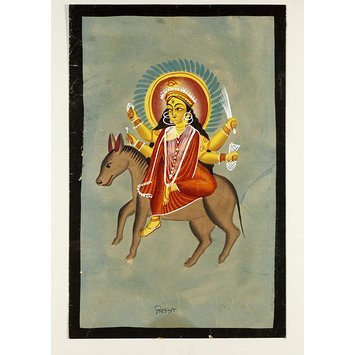
Sitala devi. Source
As per the Devi Mahatya, a demon named Jvarasura (giver of fever; jvara means fever in Sanskrit) caused fever and sickness to the children. It was then that devi Katyayani took the form of Sitala to purify the blood of children and destroy the germs. Sitala is often worshipped along with Oladevi (devi of cholera) and is depicted along with Jvarasura, Ghentu-debata (the god of skin diseases), and Raktabati (the devi of blood infections). Sitala devi is till revered in many parts of West Bengal as evident from the number of temples extant across the state.
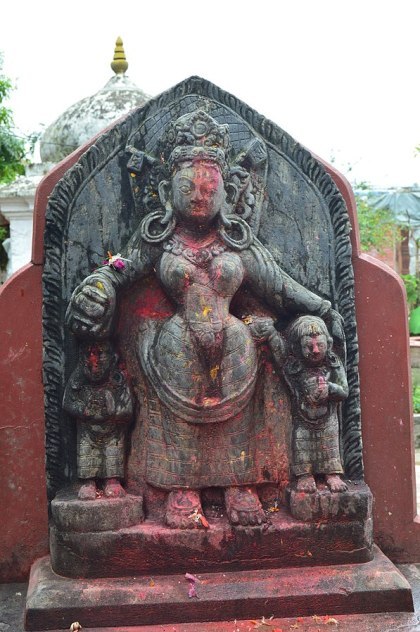
Sitala Ma Statue at Gokarneshwor Mahadev Temple Premises, Gokarna, Kathmandu. Source
References:
Bodhayana Grhyasutra
pdf of Srinivasacharya (editor) can be downloaded from archives.org
pdf of Srinivasacharya and Shama Sastri can be downloaded from VedicGranth.org
Dipesh Chakrabarty, 2000. Provincializing Europe: Postcolonial Thought and Historical Difference. Princeton University Press, New Jersey.
Tracy Pintchman 2005. Guests at God’s Wedding: Celebrating Kartik among the Women of Benares. State university of New York Press, Albany.
Kariteimo.
http://www.onmarkproductions.com/html/kariteimo.html
Mahabharata (in various languages are available on archive.org)
https://archive.org/details/mahabharata01ramauoft/page/n23
https://archive.org/details/MahabharatRajsekharBasu
Lingapurana
chapter on “Alakshmi” (pp 618-626) available at
https://archive.org/stream/LingaPuranaJ.L.ShastriPart2/Linga%20Purana%20-%20J.L.Shastri%20-%20Part%202#page/n109/mode/2up
Proggya Ghatak. Sitala
TNG. Rao, (1914). Elements of Hindu Iconography, Vol 1-part II.
Dowson, John (1820–1881). A classical dictionary of Hindu mythology and religion, geography, history, and literature. London: Trübner, 1879.
available at archive.org
From to Jara, Hariti, Jyestha/Alakshmi, to Sitala – an interesting study of the worship of folk devis Interestingly India has seen many folk or tribal deities from ancient and medieval eras being worshipped from time to time, especially during the time of epidemics, and other physical and natural calamities.
#alakshmi#alakshmibidey#alakshmipuja#art#bengal#buddhism#china#culture#festivals#hariti#hinduism#history#india#japan#jara#jyestha#people#religion#rituals#shitala#sitala#travel#worship
1 note
·
View note
Photo

Buddha figure carved on a rock face 赤水の岩堂観音磨崖仏 鹿児島県霧島市
2 notes
·
View notes
Text
New Post has been published on Found The World
New Post has been published on https://foundtheworld.com/reigando-cave/
Reigando Cave - Visit this Wonder on a Day Trip from Kumamoto
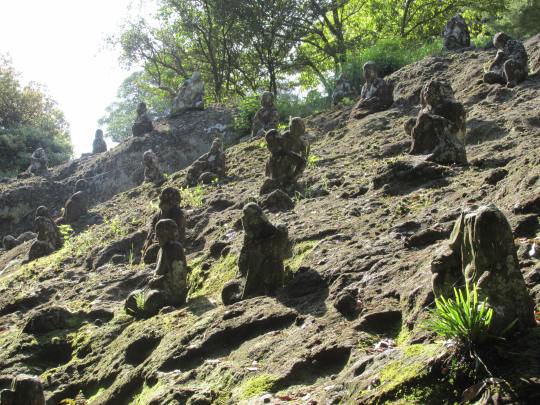
Kumamoto city (in Kyushu, Japan) hasn’t always been a top tourist location. The area gained recognition after the 2016 earthquake which devastated Kumamoto Castle, the city’s main tourist attraction. However, don’t write Kumamoto off your travel list – there is plenty to do in the city, as well as numerous amazing day trips which take little more than a short car journey. One such location is Reigando Cave, famous for housing a historic figure in years gone by. Aside from the cave, you can also see the brilliant 500 statues which litter the hillside, enjoy awesome views of rice terraces, and finish it all off with a visit to a thoroughly British tea and antique shop… of course.
Reigando Cave
‘Spirit Rock Cave’ looks more impressive before you go inside. At the end of the cliff path, you can see two steep (and vaguely hazardous) staircases leading up to the mouth of the cave, nestled into the rock face which is sheltered by trees. Various decorations give the entrance to the cave a more impressive feel, but once you’ve ascended you’ll see that the cave is really quite tiny, just twenty feet across. Dominated by a large rock in the middle and a shrine at the back of the cave, it seems hard to imagine that this hole in the wall was ever called home.
But home it was, to Miyamoto Musashi (who lived 1584 – 1645) who was a well-known samurai in his day, though now more famous for his work as an author. This Buddhist swordsman was a traveller undefeated in duals, of which he fought more than 60 in his lifetime. However, in his later life he swapped the sword for a pen and in the year 1643 he entered Reigando Cave. His final work, The Book of Five Rings, is a philosophical piece giving practical advice on the ins and outs of war. The book covers five topics – Wind, Water, Earth, Fire and The Void. The work was completed a few months before he died at the age of sixty. Living in a cold, damp cave can certainly cause a few problems for your health, so it is no surprise to learn that he actually died within the Reigando Cave.
But don’t be put off by morbid thoughts – the cave is a pleasant place to visit, with most visitors wondering whether the large rock in the middle of the room serviced Musashi as his bed or his armchair. Take time to look up at the ceiling and into the nooks and crannies where you can find decorations and carvings hidden away. Watch your step coming down again – the stairs can get slippery in poor weather.
Gohyaku Rakan – 500 Statues
The other attraction at the site (and my personal favorite) is not the cave itself but the walk to get there, past 500 fascinating statues which are scattered across the hillside. Representing the five-hundred followers of Buddha who achieved enlightenment in their lifetimes, these statues are rather like a more jovial version of China’s Terracotta Warriors. Each pulling a different facial expression and sitting in a different position, they say that if you look long enough you can find one that looks just like you. No mean feat if you happen to be a woman, given that all of the statues look decidedly like men. Having been guarding the hillside for a number of years, naturally some of the statues are looking a little worse for wear. Some are missing limbs while others are entirely headless, with some of them put back together but looking a little mismatched. The statues are wonderful, and you could visit half a dozen times and still see something new each time you visit.
Entrance
Open every day from 8:00 – 5:00, entry to the Reigando Cave costs just 200 Yen (100 Yen for a child ticket) and group discounts are available. This attraction isn’t well-known with either local or foreign tourists, and even locals of the Kumamoto area often haven’t visited. This is one of Kumamoto’s best kept secrets – a cheap day out, something interesting to see, and you’ll probably have the place to yourself. Being up in the hills, it makes for a pleasant place to visit in the summer as the temperature is a little cooler up there. However, you’ll need to watch out for mosquitoes as they can be found in number anywhere near bamboo. The best time to visit is first thing in the morning or later in the afternoon – with the sun streaming through the trees and dappling the hillside, it lights up the statues in the most glorious way. Not a rainy day activity, but just as beautiful on a sunny day in winter.
Mountain Viewing Point
Near the car park at the top of the hill (there is also parking right next to the ticket desk, but I recommend parking up by the big statue of Musashi) there is a path leading up the mountain. It doesn’t take long, just a few minutes, but it’s absolutely worth the climb. At the end of the path you come out onto a opening which has the most stunning view. Surrounded by mountains, with the valley down before and the sea in the distance, it makes for a wonderful picnic spot. Few tourists bother trekking up this way, but I would say it’s one of the most breath-taking things to see there.
If the view has taken your fancy and you want to check out somewhere else nearby with a wonderful scene to behold, consider stopping off at Honmyo-ji on the way back into Kumamoto. Named the highest ranking Buddhist temple of its sect in Kyushu, the temple is set halfway up the hill to Honmyo Park. There are around 300 steps to reach the top, or you can take the easy route and drive straight up. The view from the park is immense – you can see the whole of the city, with the bullet train line snaking along in front of you and mountains on the hazy horizon. While you’re there you should certainly check out the temple itself, as well as the Hanazono Cemetery behind, with stones lining the steps down to the bottom. It’s a beautiful place to stop off, and particularly nice to break up the car journey back from Reigando Cave, especially seeing as those roads are so twisty and winding!
Kokopelli – Cafe & Antiques
If you forgot to pack a picnic, don’t panic – you can head on down to Kokopelli. Just a few minutes down the hill from the ticket desk, you can find a charming little cafe in a traditional Japanese house, which is actually over 100 years old. While it looks thoroughly Japanese from the outside, once you get inside you’d be forgiven for thinking you’d stumbled into rural Britain. With knick knacks piled high, this place is a cafe which also doubles as an antique shop, selling bits and bobs brought over from England. Household items of days gone by, jewellery, glassware, furniture, old books, photographs and paintings… it’s an absolute treasure trove, with prices akin to treasure to match! A vintage camera will set you back between 6,000 and 12,000 Yen, and if you fancy one of the wooden and glass doors they have for sale, you’ll be paying between 4,000 and 10,000 Yen. The bric-a-brac might be a little out of your price range, but it doesn’t cost to take a look, and with so many antiques jumping out at you it’s easy to feel as if you’ve wandered into a museum.
The cafe serves light meals as well as drinks and cakes, with Asian and European choices as well as fusion dishes. The hazelnut coffee is a top choice, or iced coffee on a hot summers day. They use British tea and Jersey milk, which comes from the herds of Jersey cows in nearby Aso. Cakes use local produce and there is always a tasty selection (to eat in or take away) with the cheesecake being a top choice. Kokopelli can cater for parties and other gatherings, so make inquiries in you’re planning a special event. I can imagine a boxful of their cheesecake going down a treat at your birthday party or wedding. Kokopelli furniture and antiques are also available to rent if you want to add a special display at your event. Some staff members speak English so don’t worry if you can’t read the menu. Find out more info at the Kokopelli website.
Summary
As far as day trips from Kumamoto go, you could certainly do worse than a visit to Reigando Cave. The statues and cave don’t really take all that long to see, even if you love them as much as I do. What with the short walk up to the viewing point on top of that, you could easily manage to see all the attractions in a morning and have time for a coffee at Kokopelli before lunch. From there, you could spent the afternoon in nearby Tamana, or pop down to the sea to see the famous sandy beach which is so popular at sunset. There’s also a Musashi museum nearby. Kumamoto has loads of great choices for day trips, so what are you waiting for?
0 notes
Photo

Located in Ho Chi Minh City, Suoi Tien is Vietnam’s wacky Buddhist wonderland. It’s Vietnam’s weirdest amusement park and maybe the strangest in all of Asia. Suoi Tien is one of the coolest, most unusual, and most unique things to do in Ho Chi Minh City.
There are lots of rides and roller coasters, but the massive spectacles and displays make Suoi Tien special. The entrance fee to this sprawling theme park is less than $5 USD. And Suoi Tien is located only 40 minutes from the main tourist area of Ho Chi Minh City.
Suoi Tien is Vietnam’s wacky Buddhist wonderland Click To Tweet
Superficial Fun and Deep Cultural Heritage
This Massive Spectacle is just an ordinary decoration at Suoi Tien.
Suoi Tien mixes the superficial fun of an amusement park with the deep cultural heritage of Vietnam. In the spectacular and surreal mash-up of Suoi Tien, you’ll find:
Frivolous Roller Coasters, Carnival Games, and Junk Food
Serious Monuments to Ancient Vietnamese History
Tacky Harry Potter and Disney Knock-off Attractions
Inspiring and Original Buddhist Works of Art
Gaudy Haunted Houses and Waterparks
Real Functioning Buddhist Temples
Mini Ziplines
Giant Mythological Creatures
Suoi Tien may not make sense to us westerners, but it wasn’t designed for us. Suoi Tien was made by the Vietnamese for the Vietnamese. That’s the best thing about this theme park. It’s not the Vietnamese putting on a show for foreigners, appealing foreign tastes.
Suoi Tien is the Vietnamese putting on a show for other Vietnamese, appealing to Vietnamese tastes. The park is hugely popular. Millions of Vietnamese visit Suoi Tien every year. And that’s why it’s a cool lesson on contemporary Vietnamese culture, as well as a good time.
Best of all, you can enjoy some fantastic spectacles alongside locals. We try to give you a taste of its uniqueness in our photos. We leave out most the typical amusement park stuff. In our photos, we focus on the cultural and spiritual
In our photos, we focus on the cultural and spiritual spectacles but remember that all the temples and monuments are in the setting of a raucous amusement park.
Massive Buddha Sculpture
Avalokiteshvara Buddha at Suoi Tien
This Avalokiteshvara Buddha is 118 feet tall high, 59 feet wide. The statue has 15 faces and dozens of hands, symbolically posed. It is a very dramatic Buddhist monument, but there is a serene Bodhisativa atop the statue. He looks tiny up there but is almost 7 feet tall.
The Avalokiteshvara is sitting on the mythological Golden Turtle God of Vietnamese folklore.
Golden Turtle God with Magical Sword
The Golden Turtle God plays a decisive role in Vietnam’s founding myths. The Turtle God came from heaven and gave Vietnam’s founders a magical sword that won them victory over their enemies.
The Serene Side
This solemn Buddha is on the other side of the massive sculpture.
Meditating Buddha
Suoi Tien is an Amusement Park
Harry Potter Knock-off, Rock Wall, and Bumper Cars
Quick reminder. Suoi Tien also has typical rides and games in addition to awesome monuments of Buddhist and Vietnamese heritage.
Golden Unicorn Plaza
Mythic Golden Unicorns
Suoi Tien features many massive statues of mythological creatures. The Golden Unicorns are some of the best. Yes, these huge golden creatures are the “unicorns” to the Vietnamese.
Are they Growling or Laughing?
The plaza is designed to be a fun meeting place. The prime seats are right on and under the Golden Unicorns.
Refreshing!
These fountains are fun to play in, on hot Vietnamese days. There also many shade trees and pretty statues to enjoy while relaxing.
Gold Maitreya
At the other end of the plaza is a Maitreya Buddha on a gold boat. That space is often used for concerts and dance performances.
Dragon Dance Performance
Dragon Head Temple
There’s a Real Temple in this Dragon Head.
Long Hoa Thien Bao Pagoda is largest and most impressive temple at Suoi Tien. It is a functioning temple where park visitors come to pray, light incense, and sometimes chant.
Elaborate Gate to Dragon Head Temple
The gate to the temple is as elaborate, beautiful, and symbolic as anything inside.
Temple Grounds
Resting by the Dragon
The temple grounds are full gorgeous Buddhist art that serve a spiritual purpose.
The Altars of Dragon Temple
The temple is vast. There are 3 large altars, 2 small ones, and numerous relics. The ceiling is a large dome painted to look like the heavens.
Hip Buddhist Statues – View From Dragon’s Mouth
Dozens of statues fill the temple, including several monks with interesting poses and facial expressions. The view looking out the dragon mouth was very cool, especially the way the tip of the tongue comes up.
Zodiac Palace
Us Sitting On Our Zodiac Animals – Rat and Tiger
The Zodiac Palace was beautiful and eerie. The 12 animals of the Asian zodiac are arranged in a big circle. We couldn’t resist getting pics of ourselves on our representative animals.
Vanessa was born in the year of the Tiger. Steve was born in the year of the Rat.
Dragon, Monkey, and Pig
3 of the coolest looking statues were the dragon, monkey, and pig.
Bodhisattva Square
Bodhisattva Buddha made of Pure Granite
This Bodhisattva Buddha monument is 89 feet tall, including the globe and stand. The Buddha alone is 40 feet tall and weighs 628 tons. It is made of pure white granite.
The reverent yet carnivalesque atmosphere is clear in these photos. The white building is the hokey snow castle.
Massive Mythological Creatures of Vietnam
400 meter Dragon – Dragon Eggs
The dragon is the central figure of Vietnamese mythology. There are several around Suoi Tien. This is the largest. It’s 400 meters long which represents the 4000-year history of Vietnam.
This dragon winds around the park. You can see the green scaly body in many other photos here. At the dragon’s tail, there are eggs representing the prosperous future of Vietnam.
Turtle-Dragon Hybrid
Zipline, Rope Bridge, and Entrance in Turtle-Dragon Haunted House
The Turtle-Dragon houses large haunted house ride. The Turtle-Dragon lake is a hub for other activities: rope bridge, zipline, and swan paddle boats.
“Giant Peacock”
“Vietnamese Unicorn”
The Vietnamese unicorn is very different from the western version.
Nine-Headed Dragon
Parade of Mythological Creatures
Crocodile Kingdom
Figures of Ancient Vietnamese History and Legends
Saint Giong Riding His Iron Horse to Heaven
Giong was a historical figure from 1700BC! In the legend, Giong was a deaf and lame child of 3 when he learned that there were foreign invaders. He magically transformed into a grown man and fought off the invaders. Afterward, Giong refused fortune and fame. Instead, he went up to Soc Son Moutain and rode off to heaven on his iron horse.
This is one of Vietnam’s oldest and most cherished legends. The village of Phu Dong was the ancient birthplace of Saint Giong. It still exists today and holds an annual festival for Saint Giong around May.
Vietnam’s Legendary Women Warriors
The Trung sister’s defended Vietnam from invaders around 40AD. They ruled for about 3 years, but have been fundamental figures of national pride for almost 2000 years.
Temple of Hung Kings
This functioning temple celebrates the ancient Hung Kings and ancestral rice farming culture of Vietnam that dates back 4000 years.
Ancient Hung Kings Still Very Popular
These ancestors are ancient but extremely popular with today’s Vietnamese. The Hung Kings temple has a steady stream of visitors lighting incense, praying, and taking selfies.
The walls and ceiling are lined with ornate carvings depicting scenes of the ancient ancestors.
Other Buddhist Monuments and Decorations
No Rollercoasters Until You Light Your Incense
There are literally hundreds of Buddhist statues, iconography, symbols all over the park. Some are minor exhibits, but most are simply decorations that create a very unique and interesting ambiance for an amusement park.
Temple of the 3 Blessings
Giant Severed Hand?
These are just a few examples.
Famous Buddhist Saints at Entrance
Even at the very entrance, the “mascots” of this theme park are famous Buddhist saints and ancient teachers.
Waterpark
Vietnamese Mt. Rushmore?
Oh yeah, and there’s a big waterpark with an ancient emperor’s head carved on huge mountain.
Suoi Tien is fun and amazing. In additional to all the other marvelous things to see, you can watch kids pray and light incense at altar, then run off to eat cotton candy and ride a mechanical dragon.
You can see how much the Vietnamese revere their 4000-year-old spiritual heritage. AND you can see that they don’t mind if that heritage is used for financial gain and superficial fun.
Suoi Tien is not an “authentic” experience like the ancient temples of Hue, but it is a window on the contemporary culture of this fascinating country.
Vietnam’s Wacky Buddhist Wonderland
Address:
120 Hanoi Highway
Tan Phu Ward
District 9, HCMC
Would you like to visit Suoi Tien, if you visit Ho Chi Minh City? Which attractions interest you?
Saigon is Very Affordable!
Check Out the Current Roundtrip Airfare and Hotel Rates Below:
Follow our Blog at BlogLovin’
The post Suoi Tien – Vietnam’s Weirdest Amusement Park appeared first on .
0 notes

